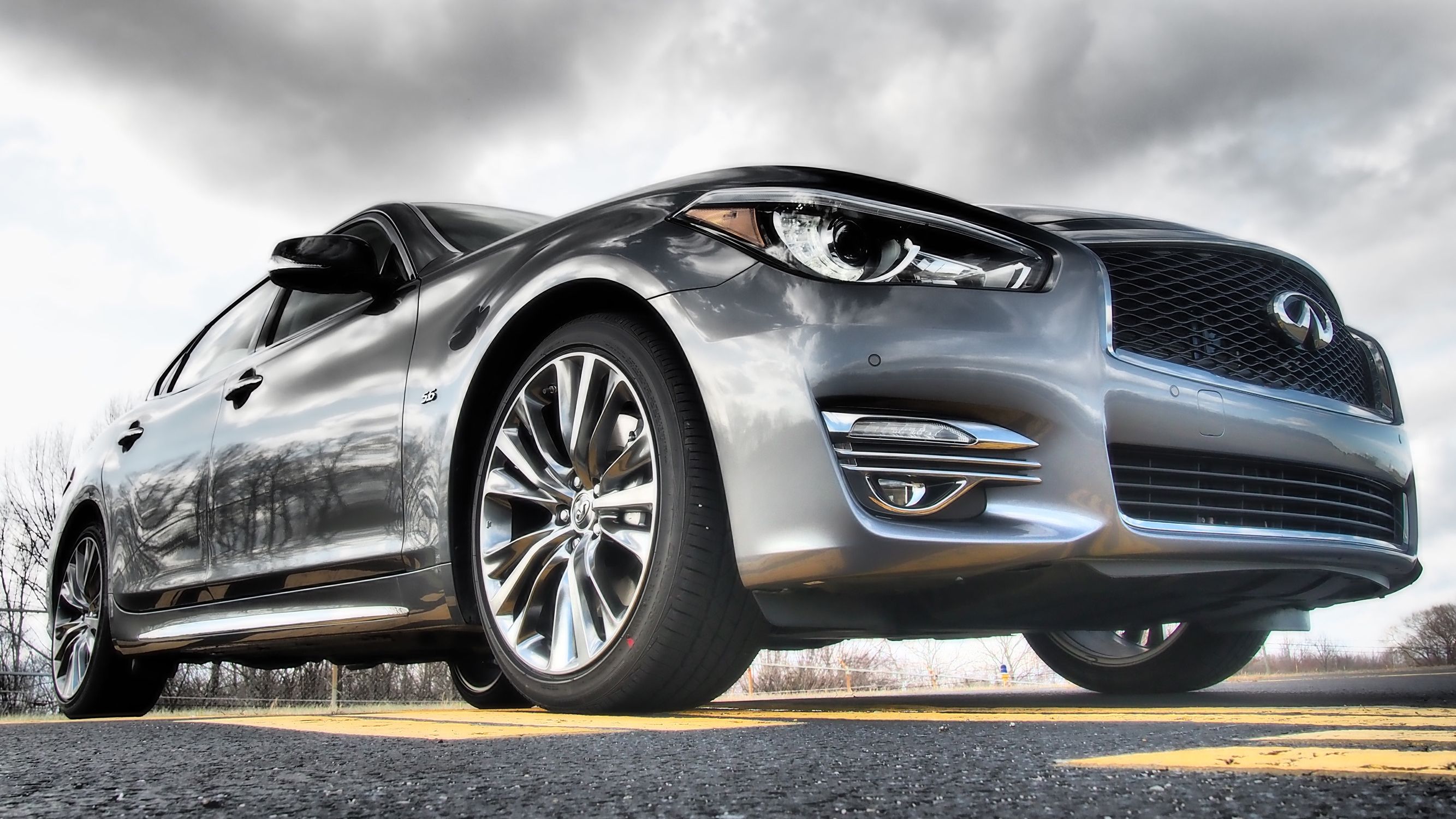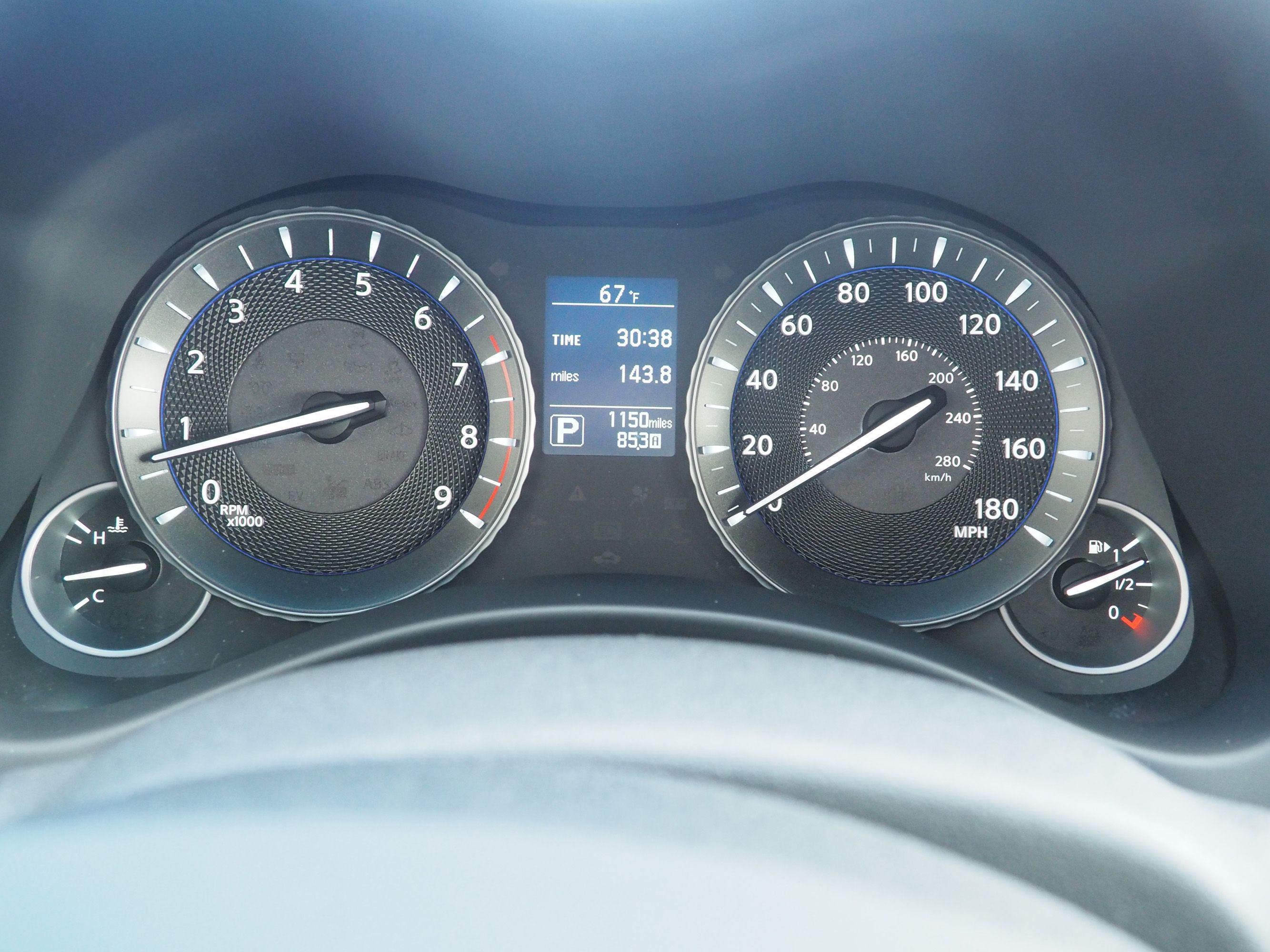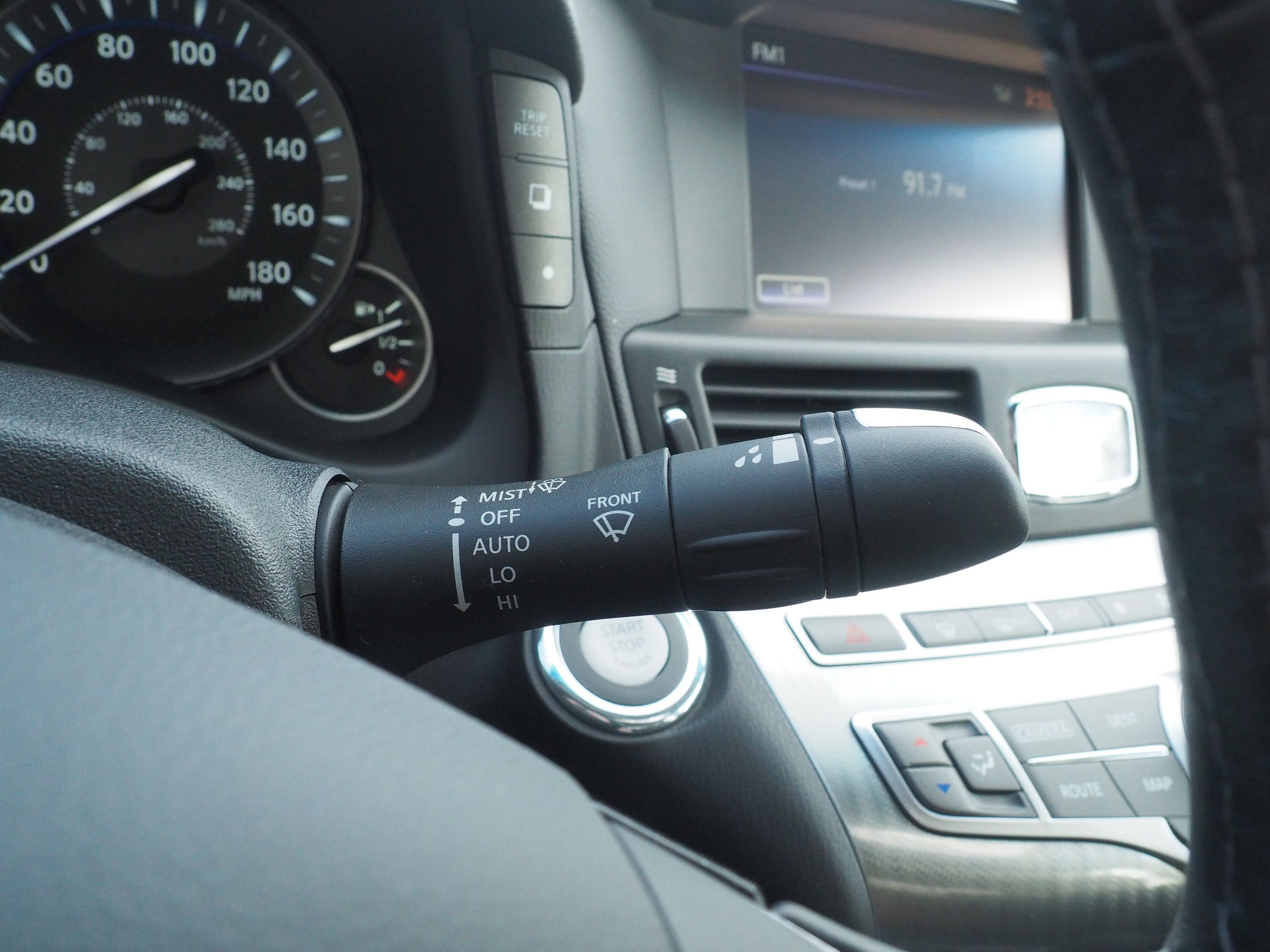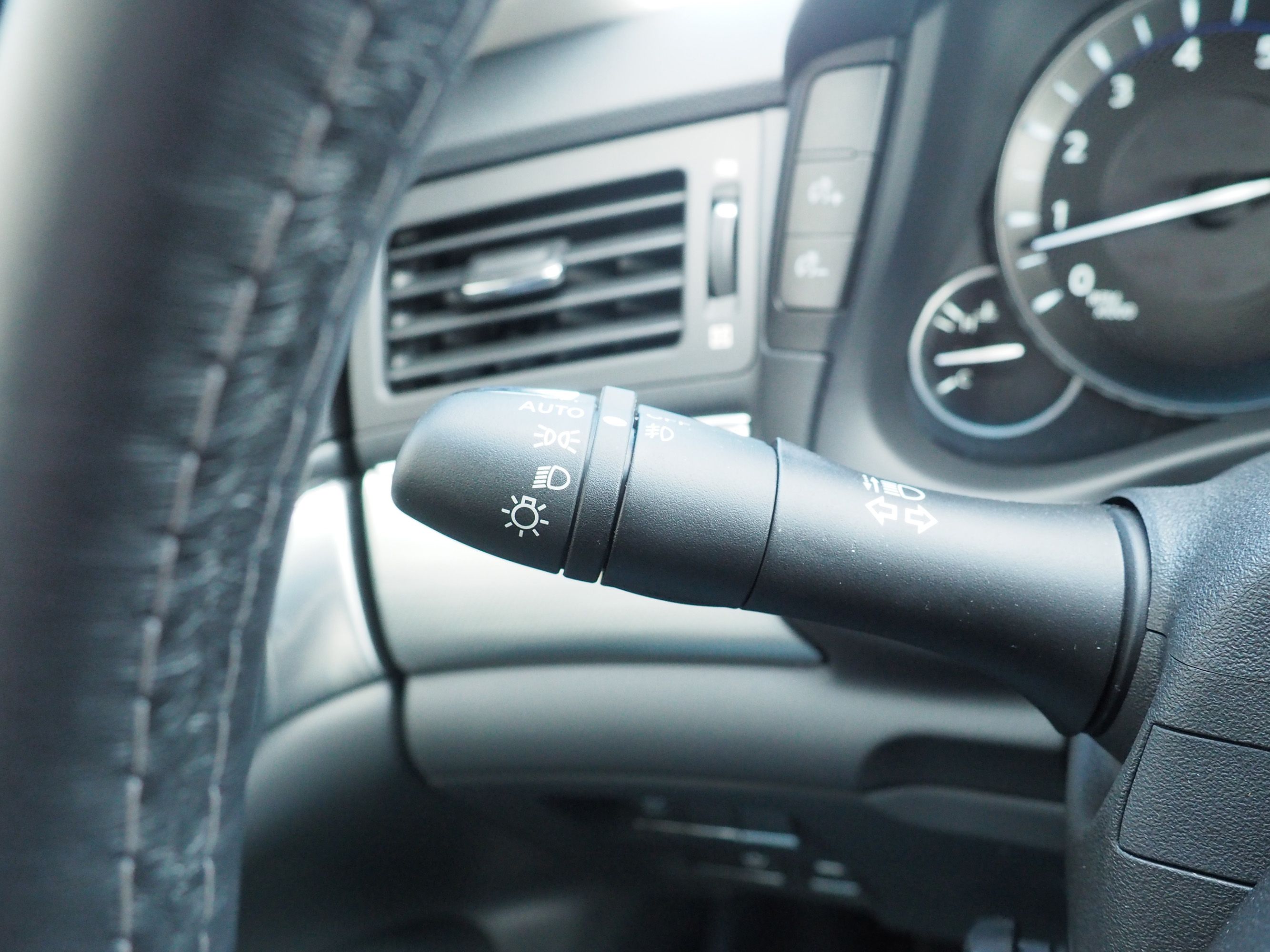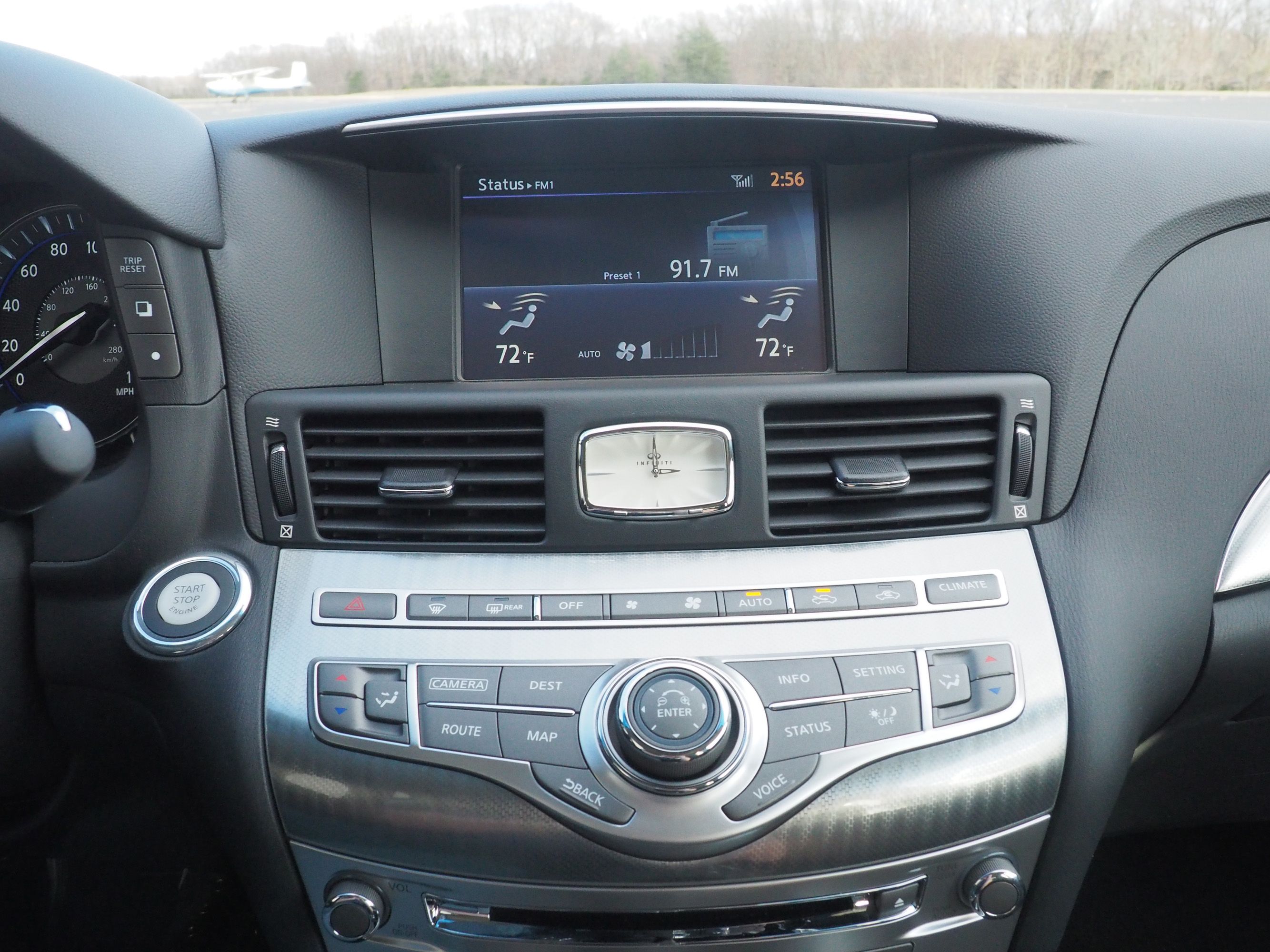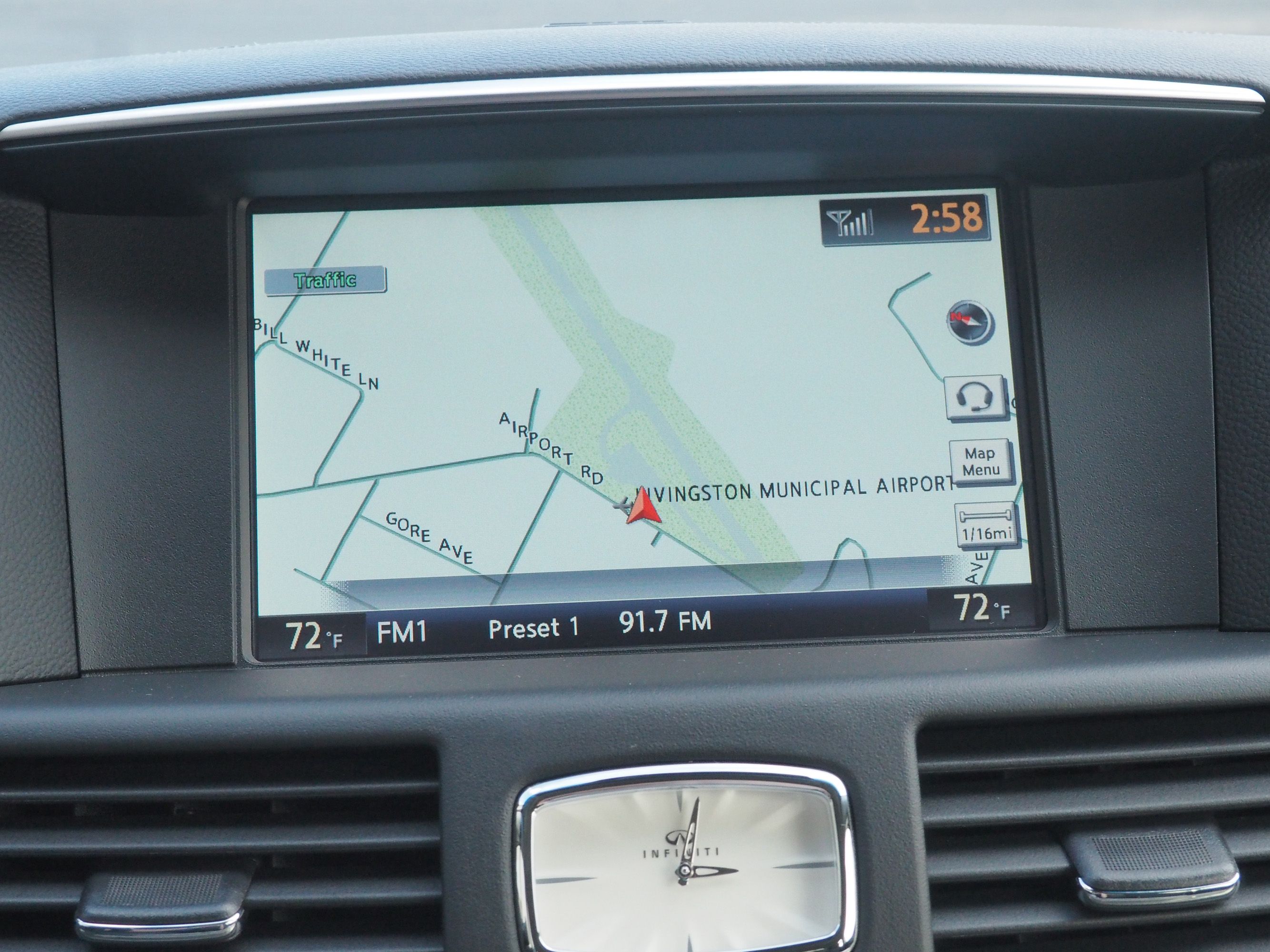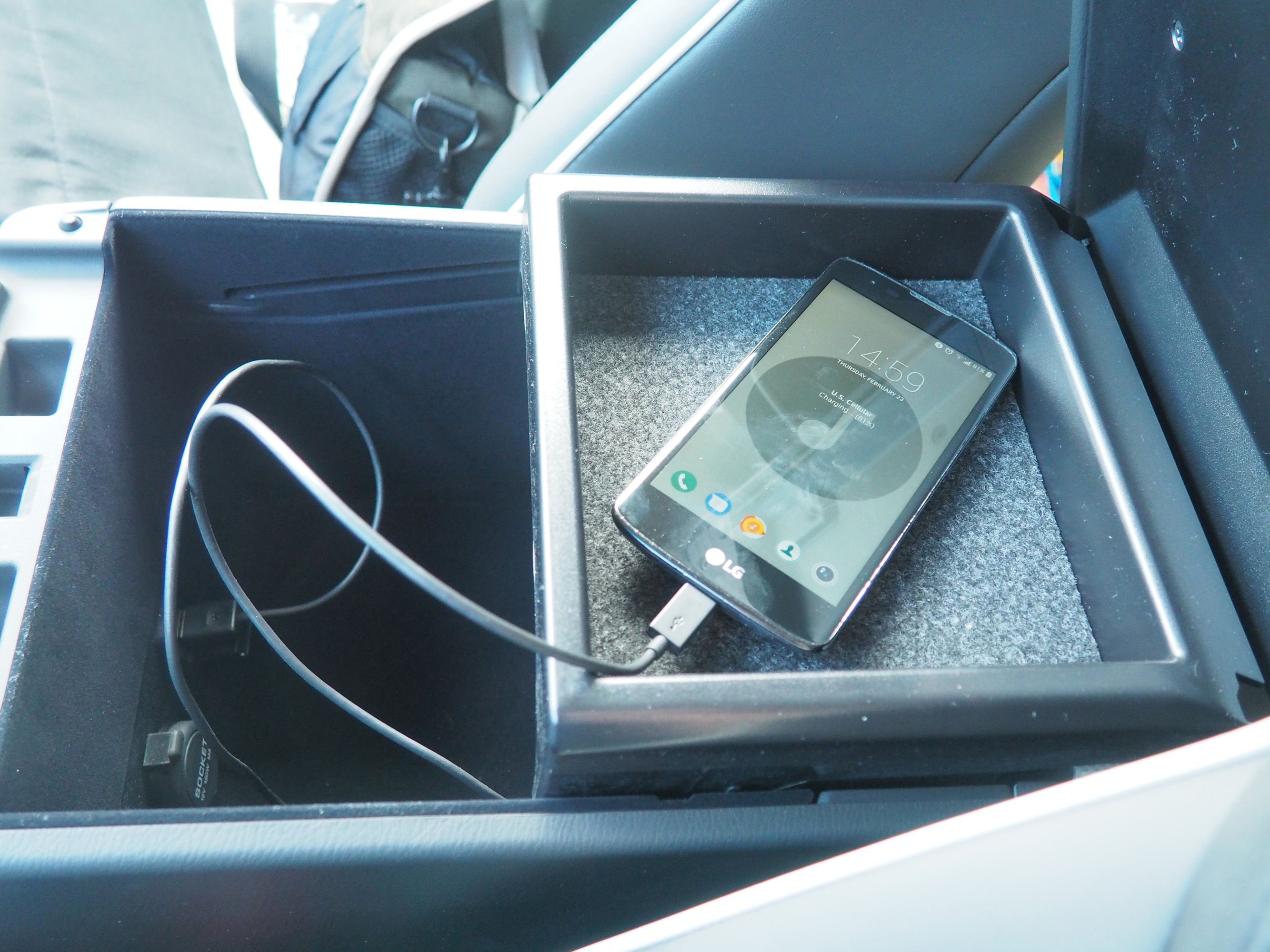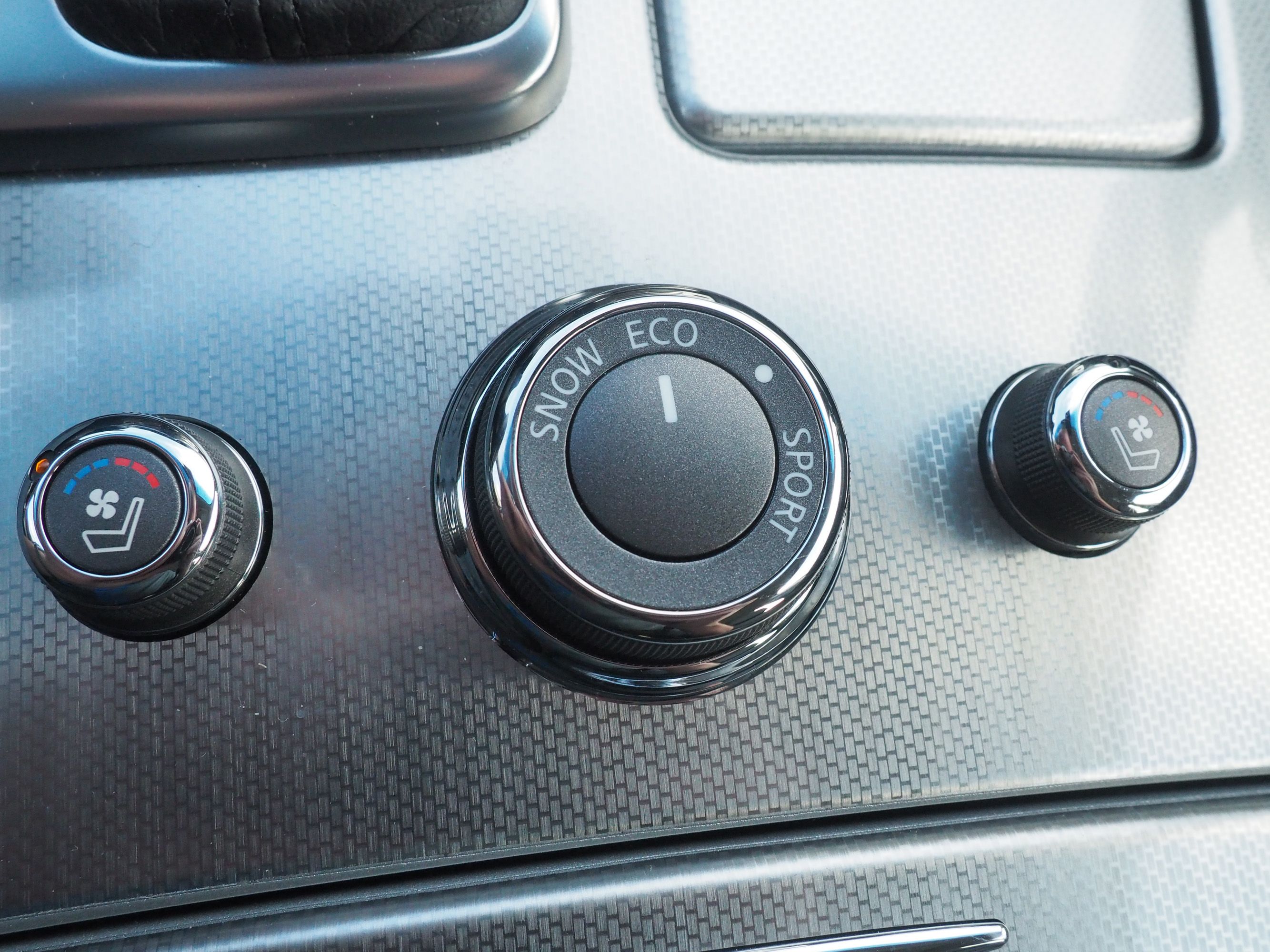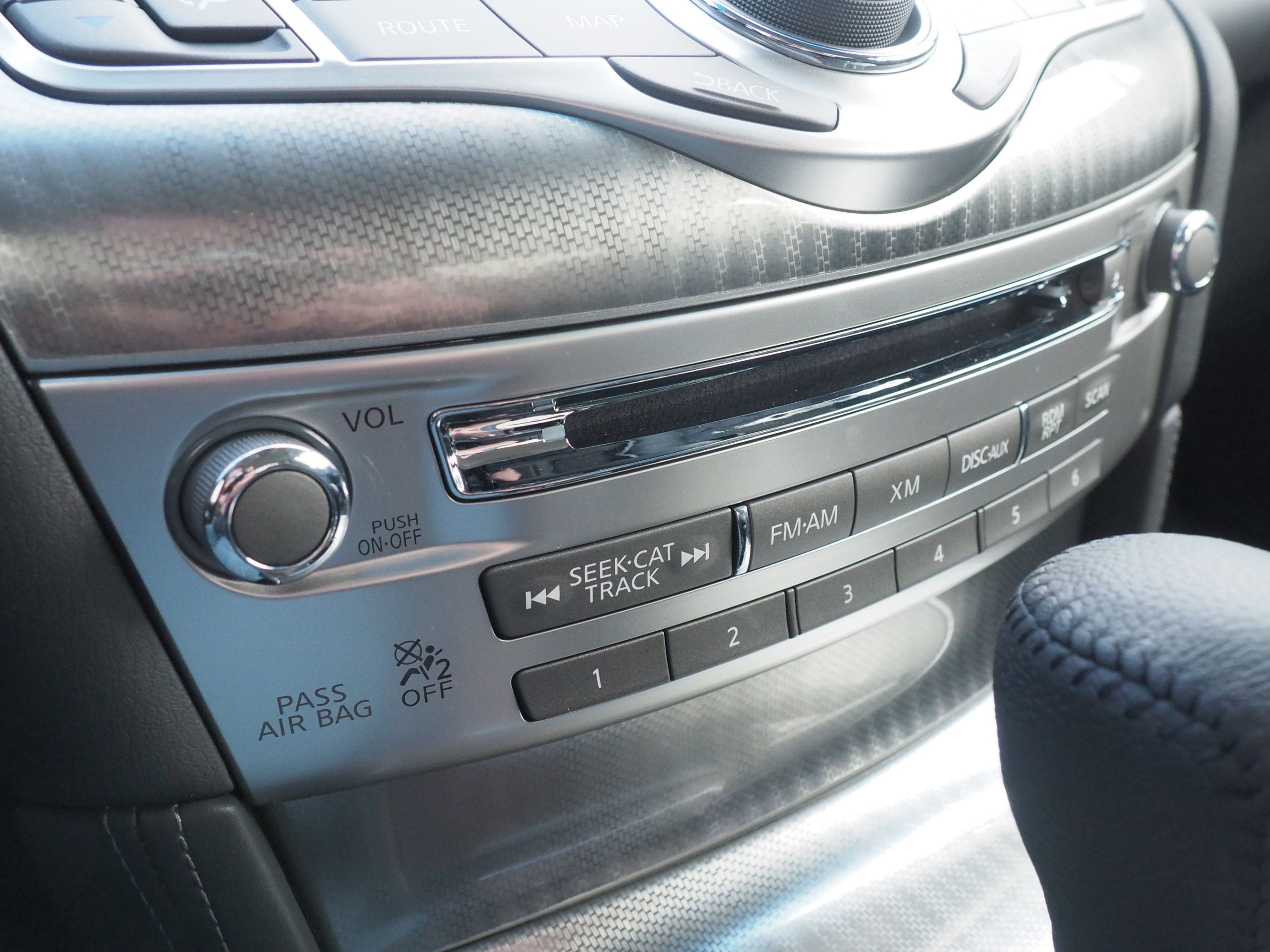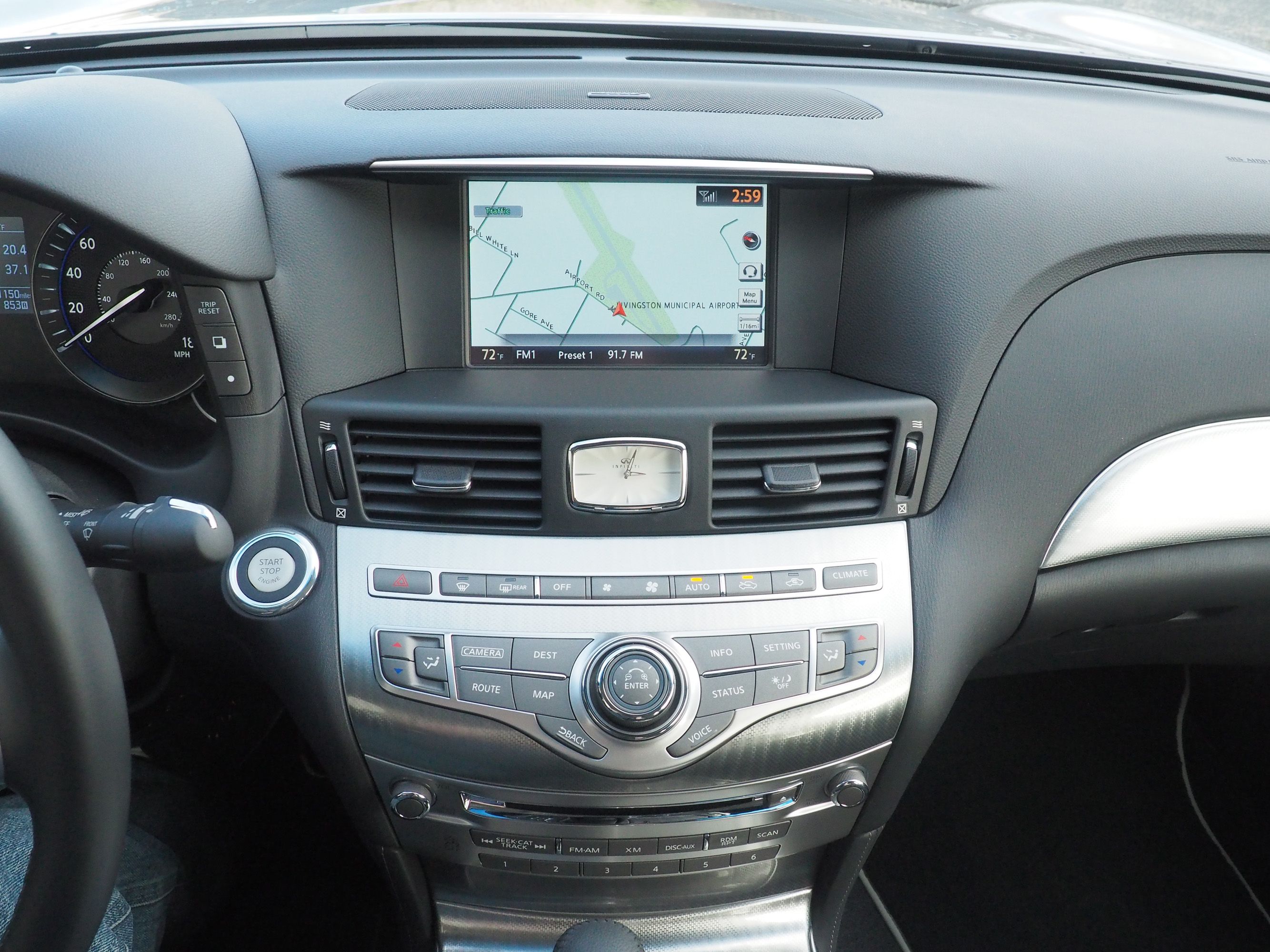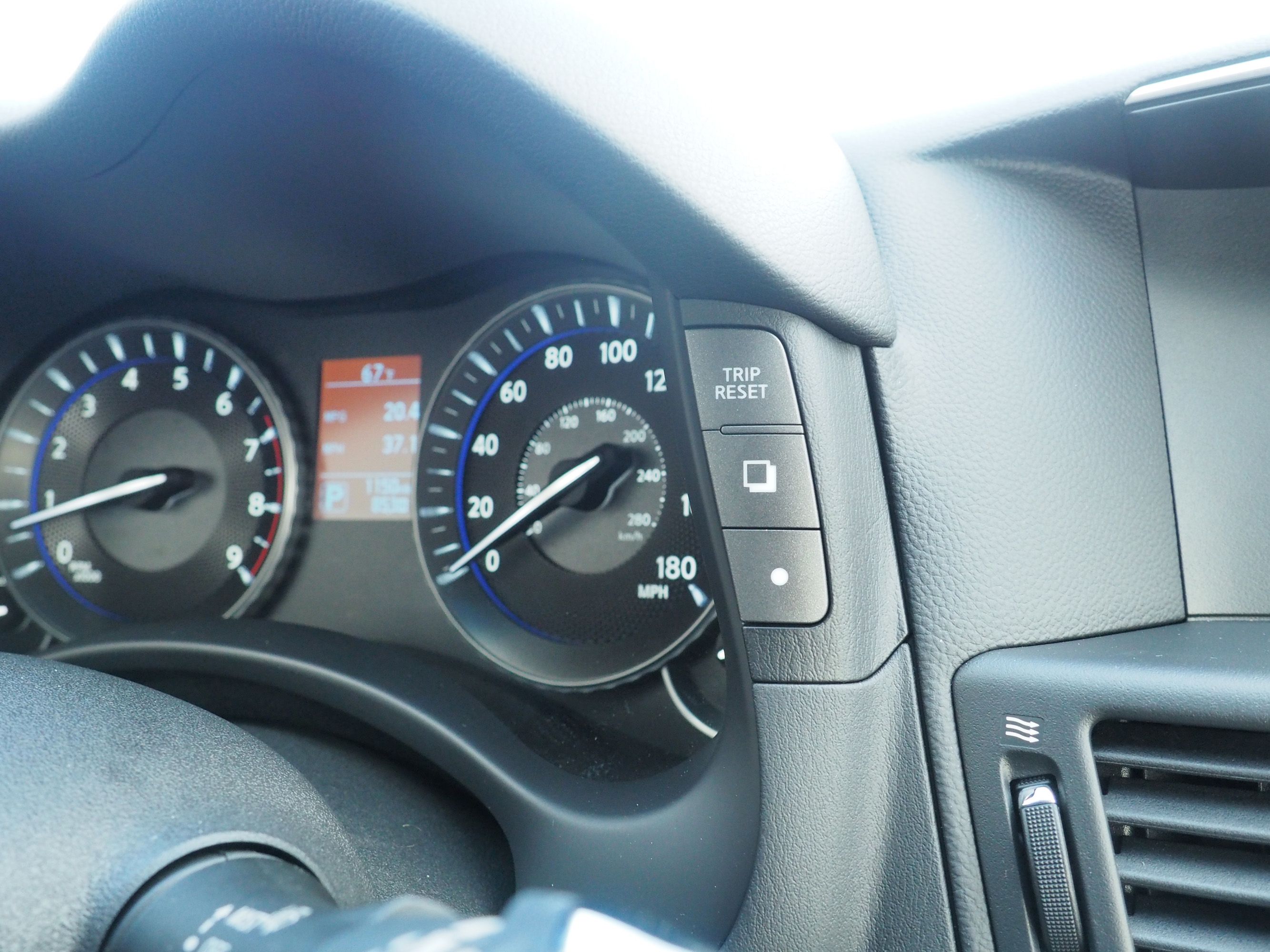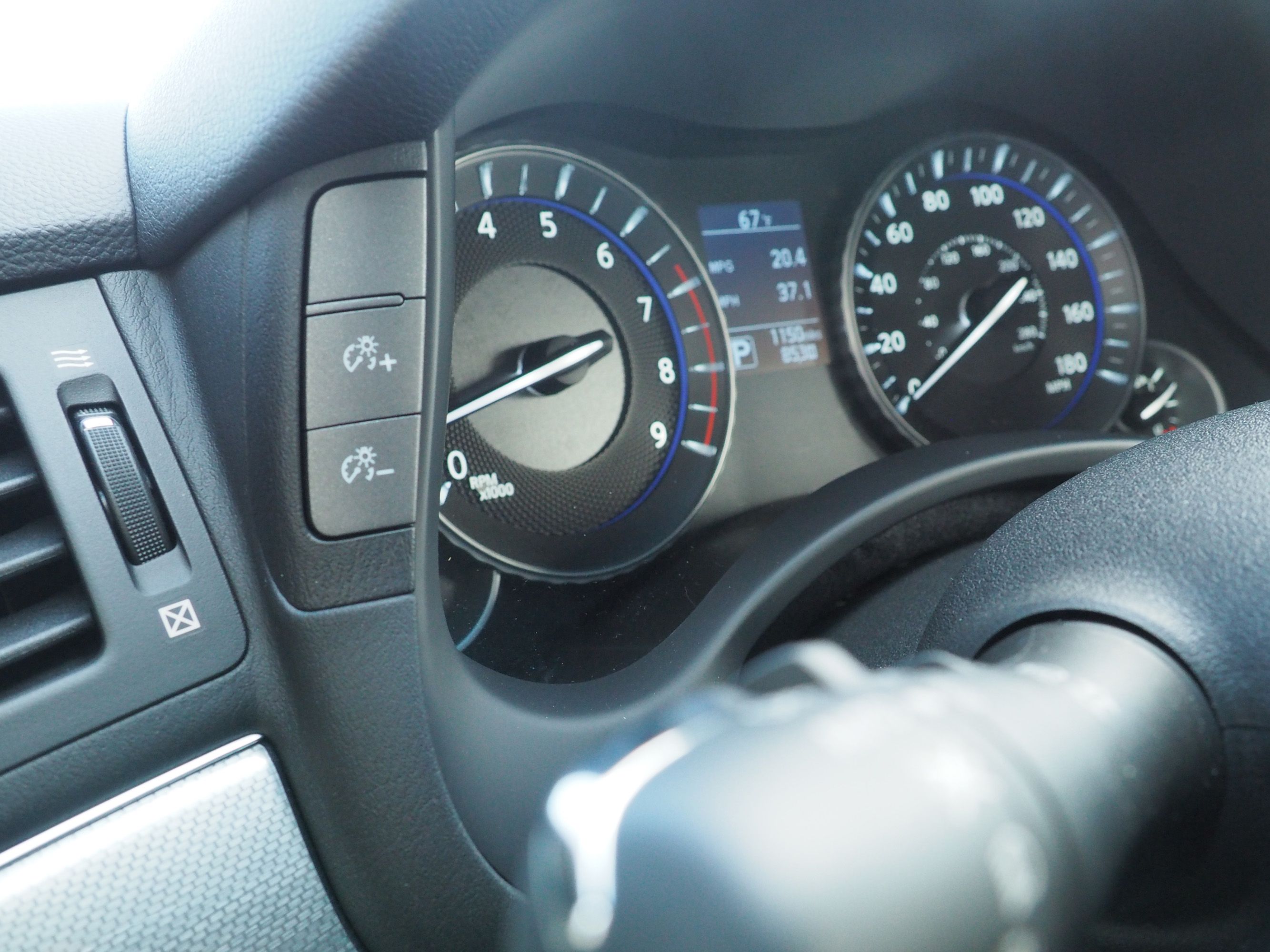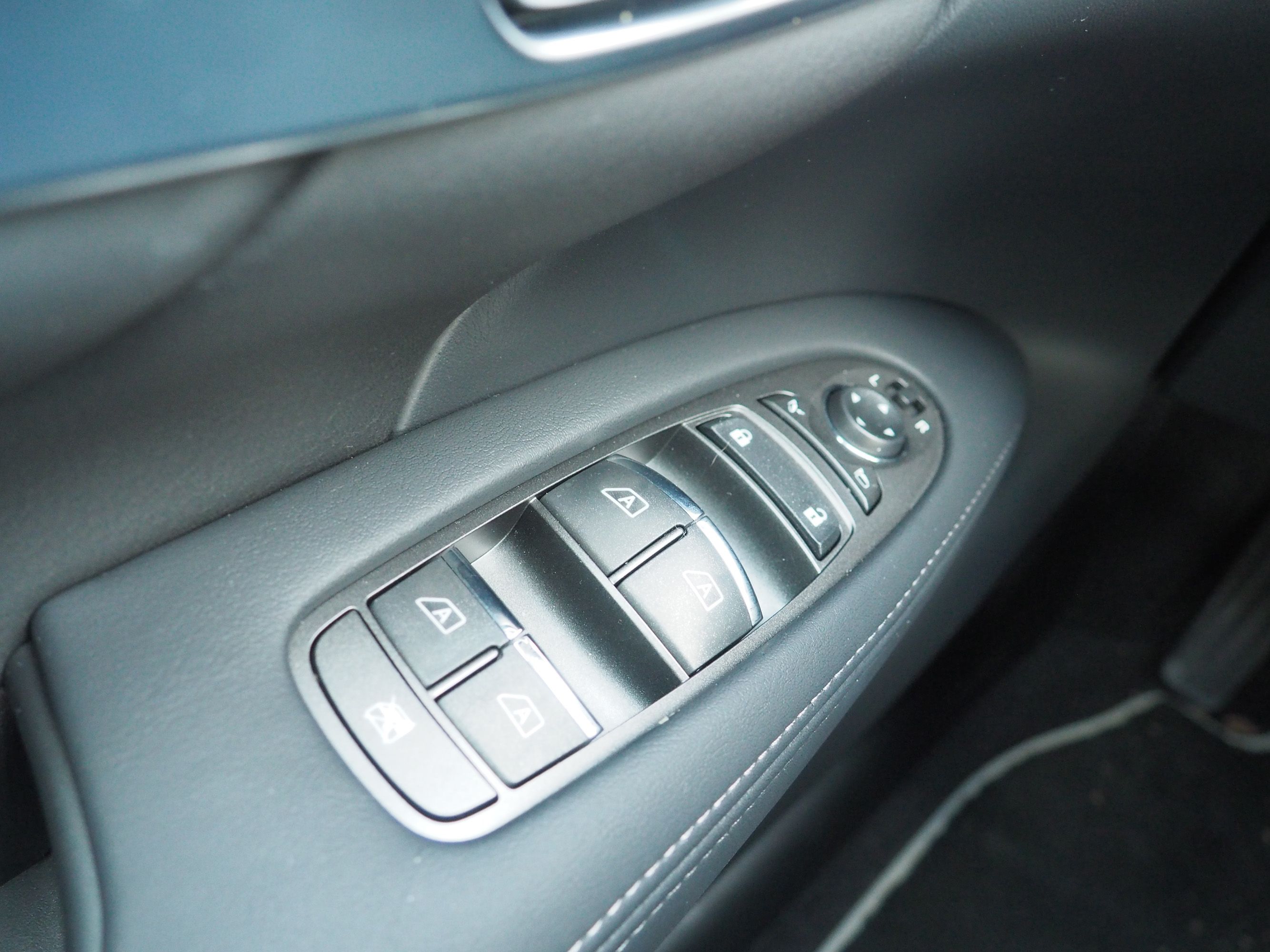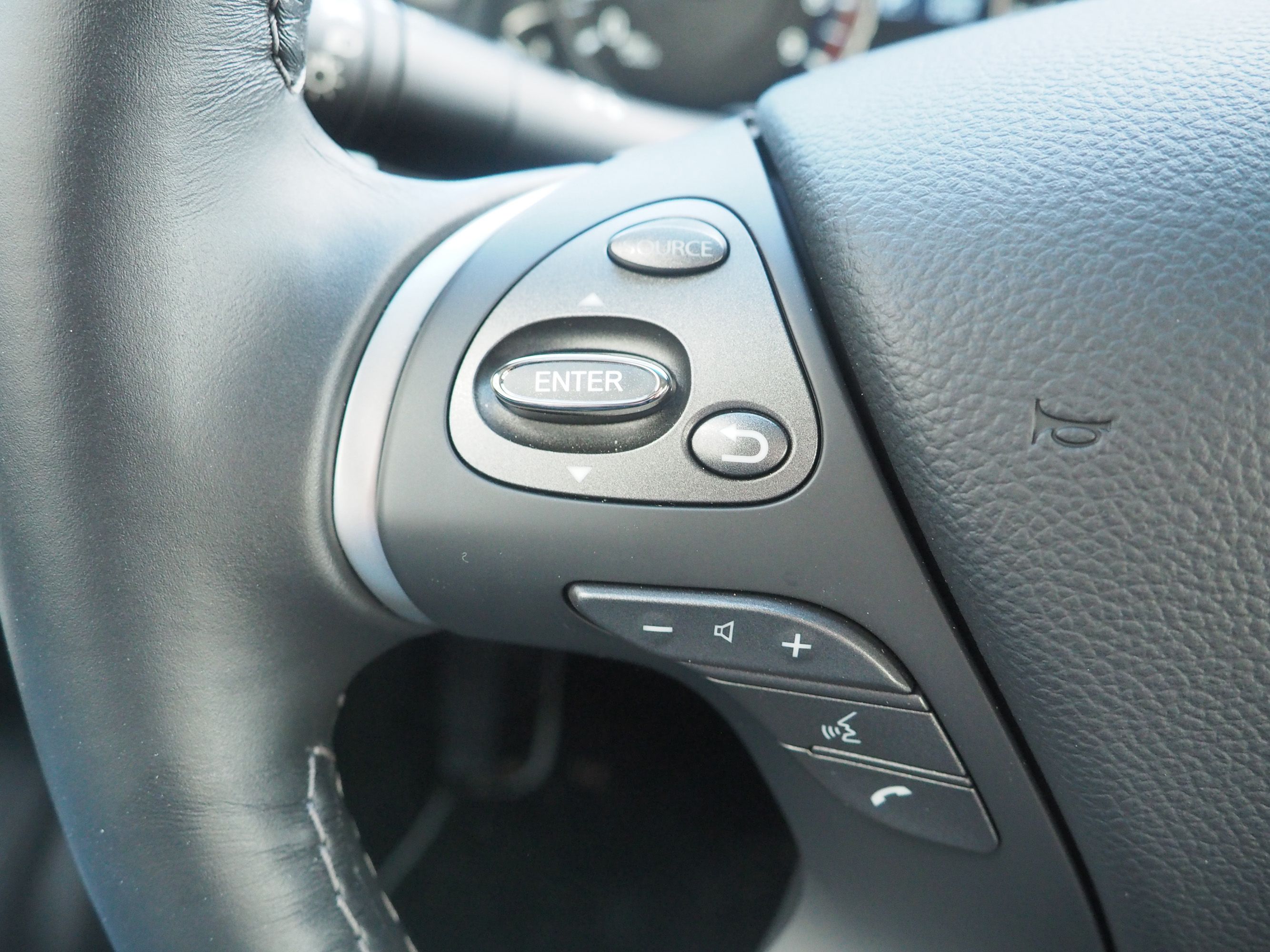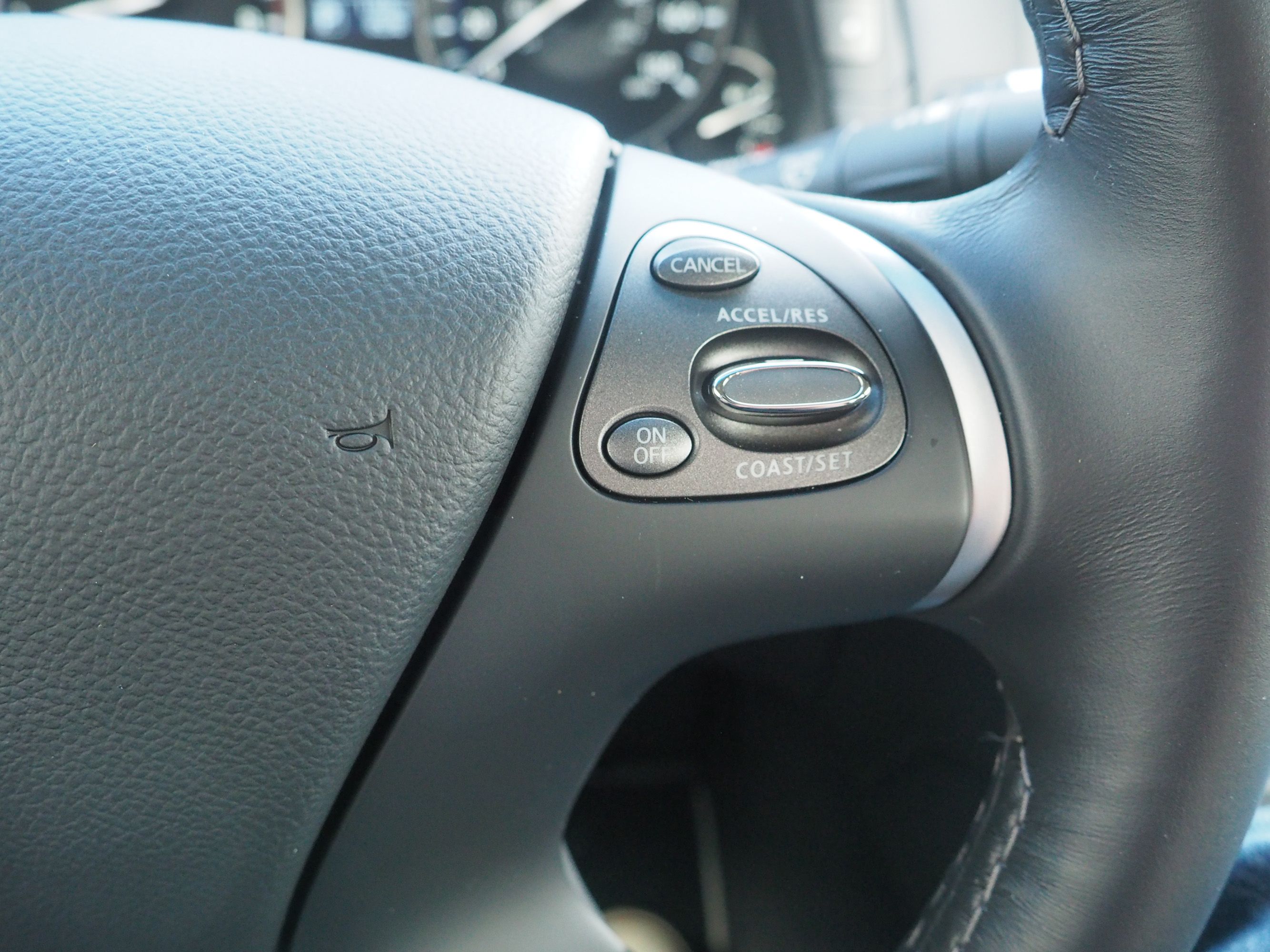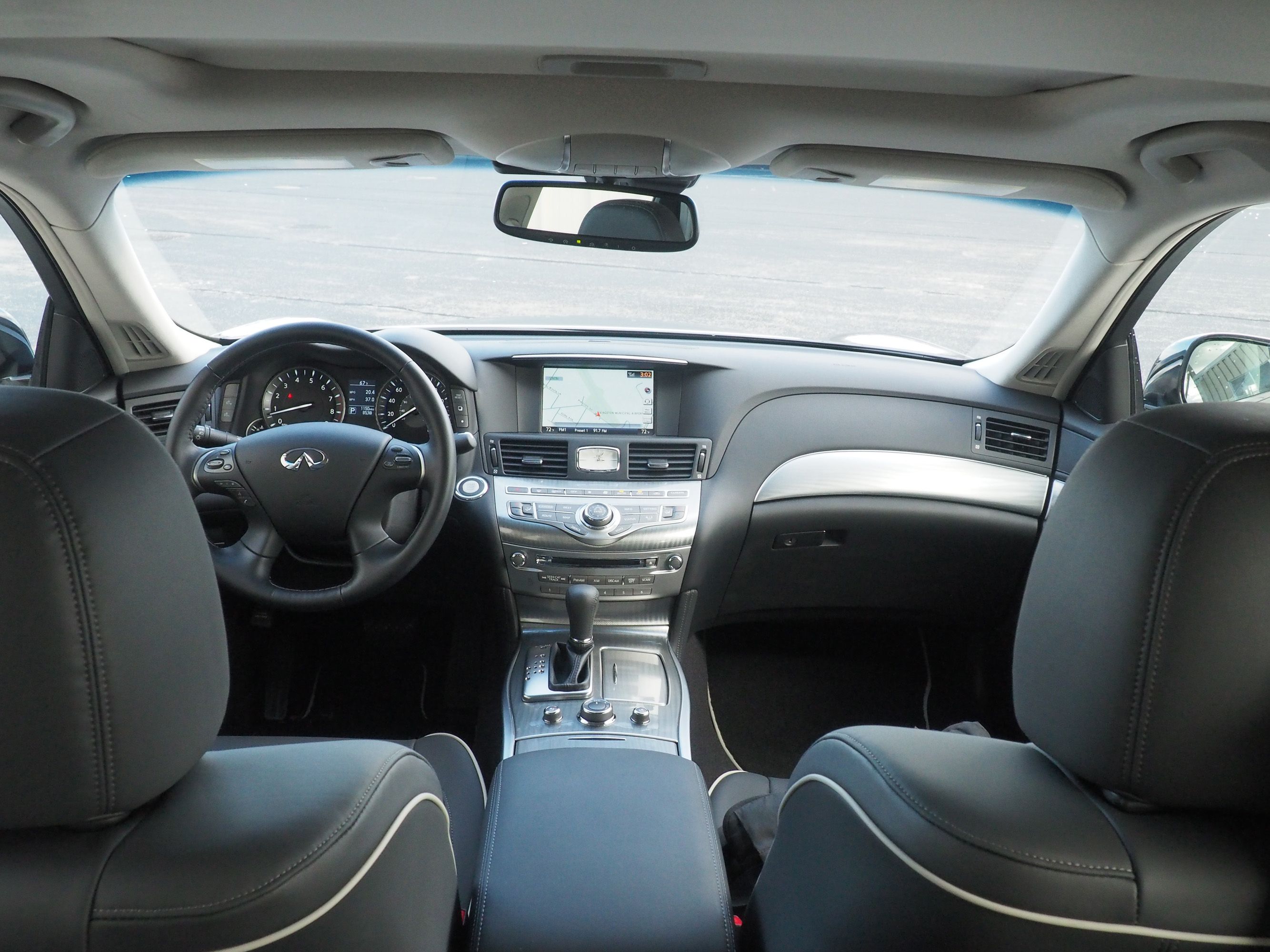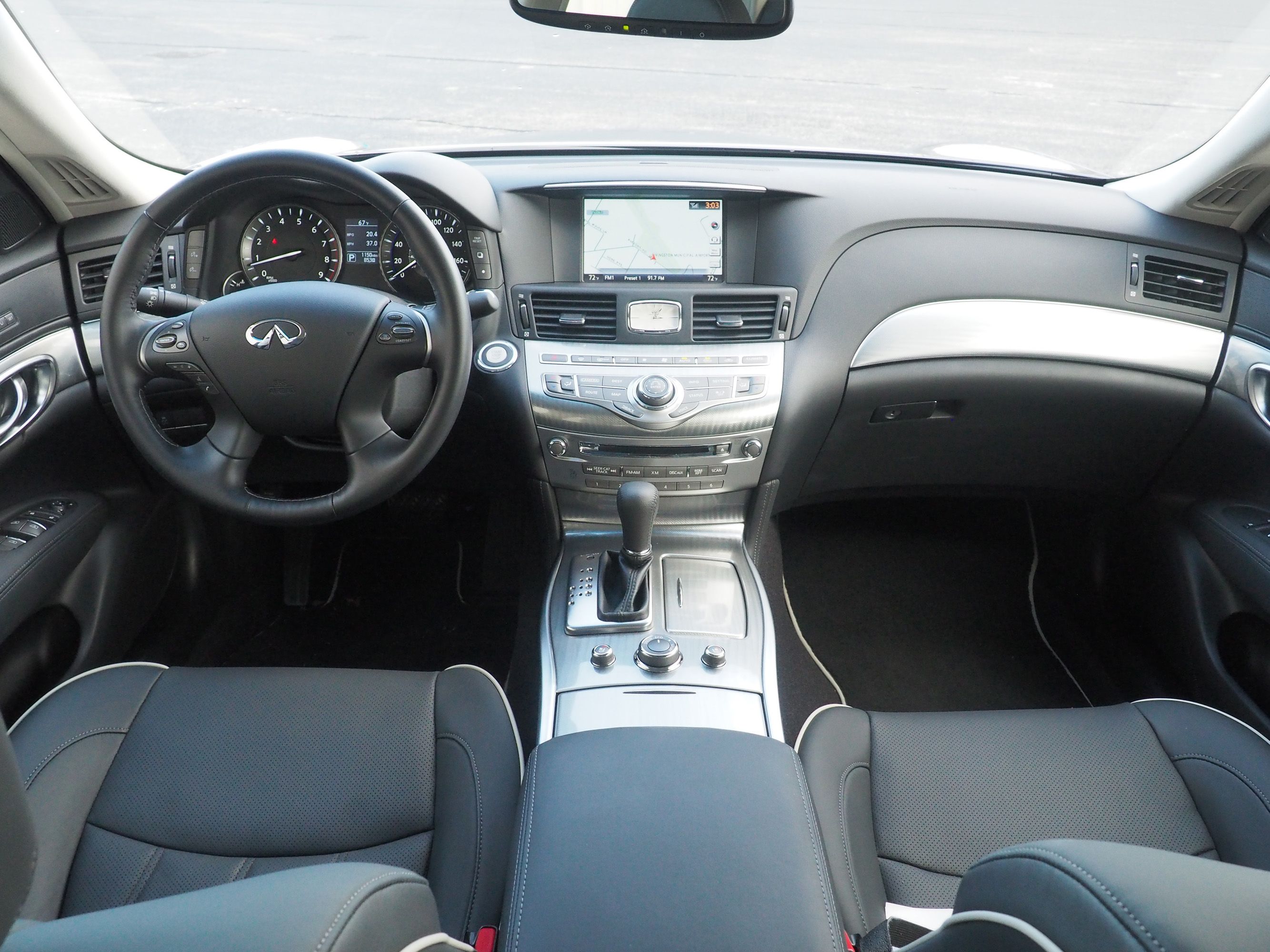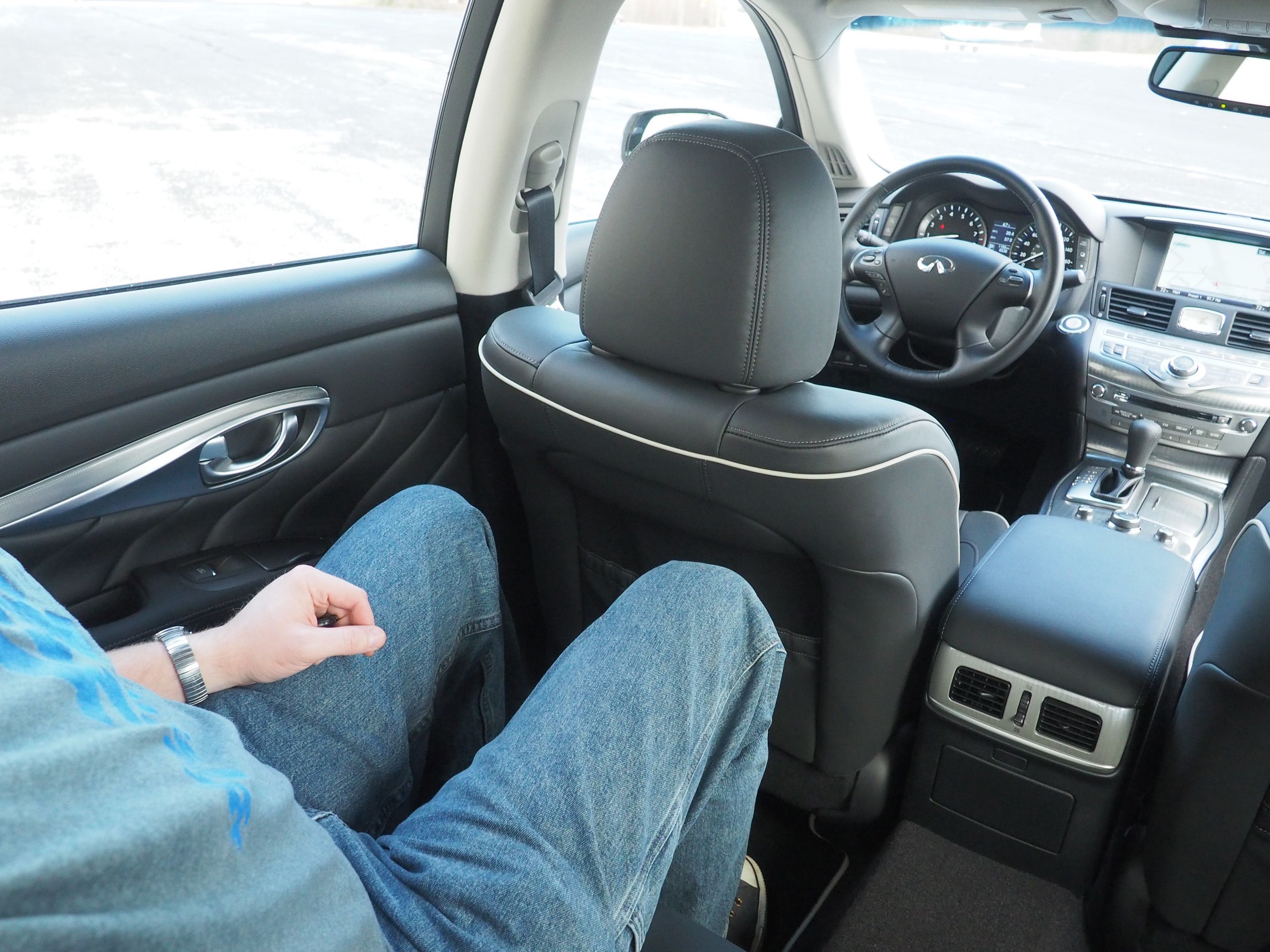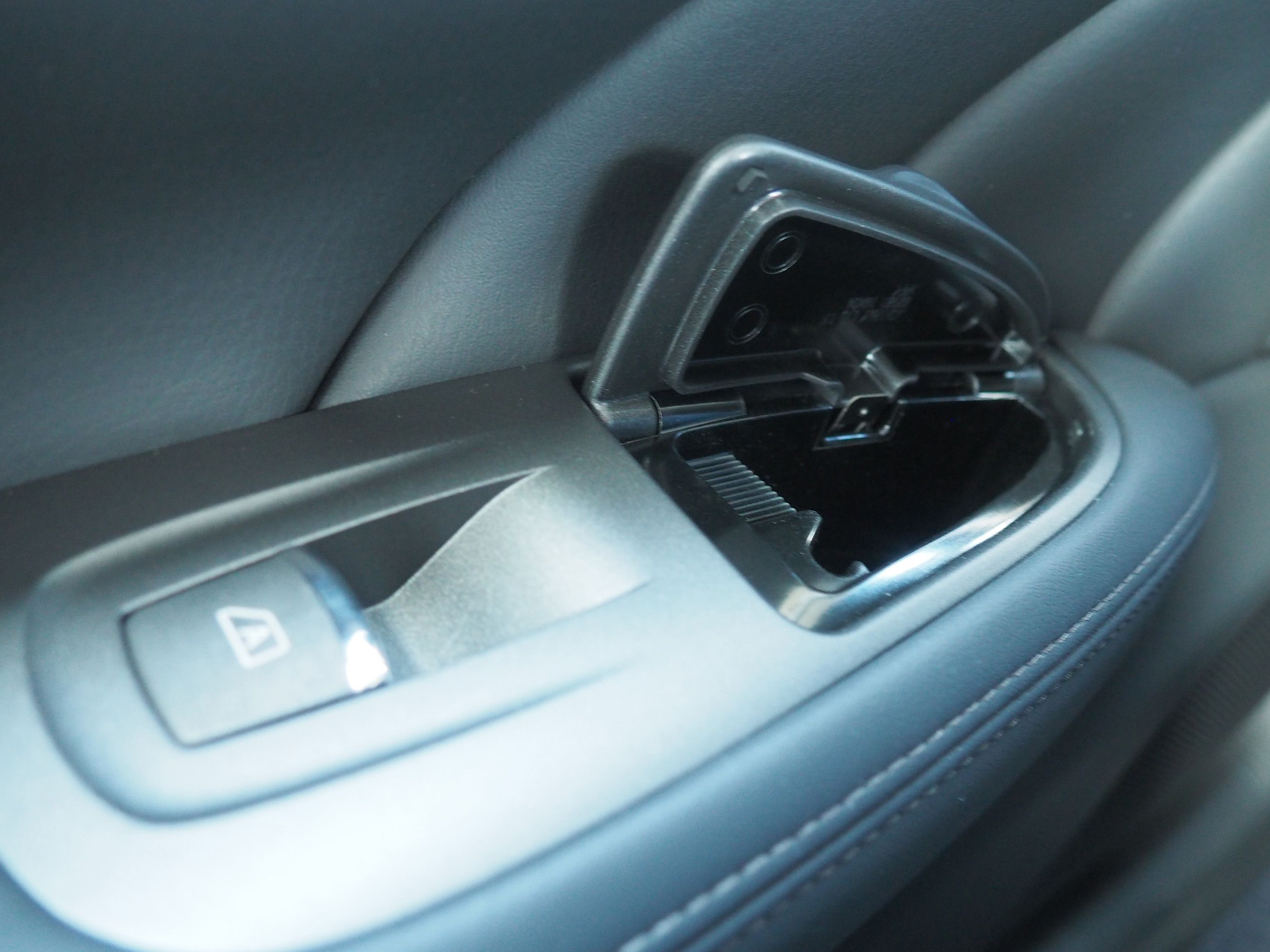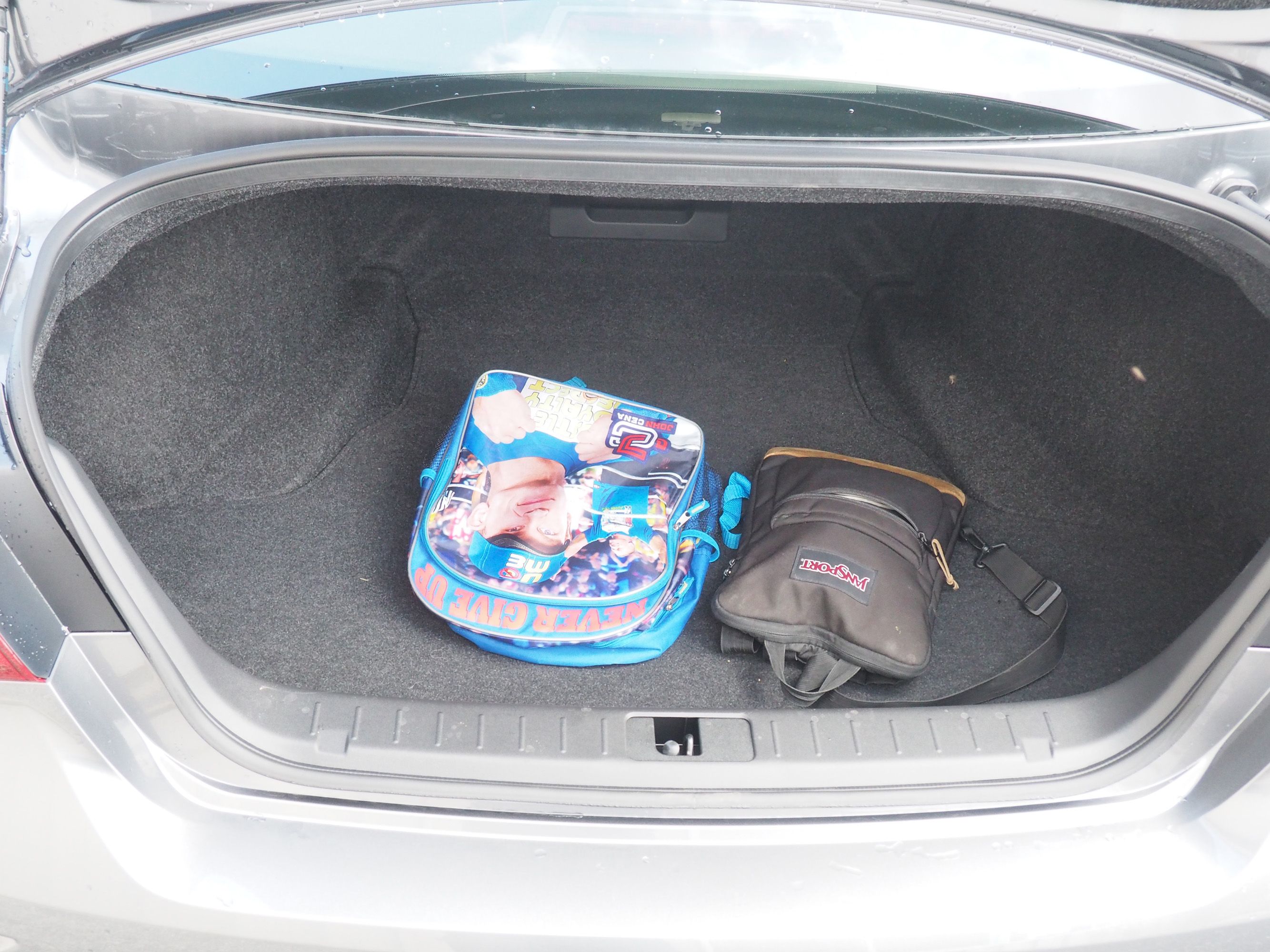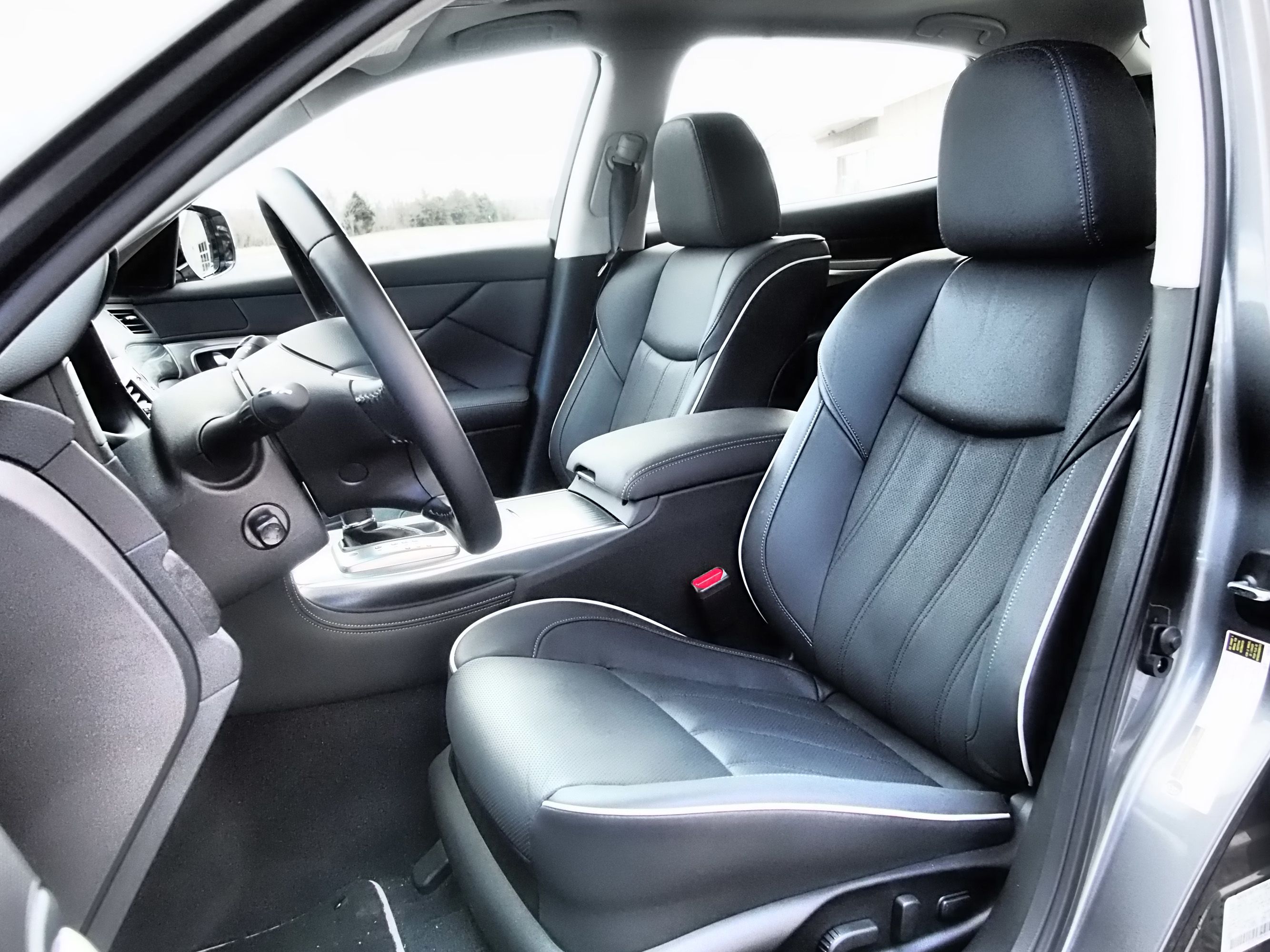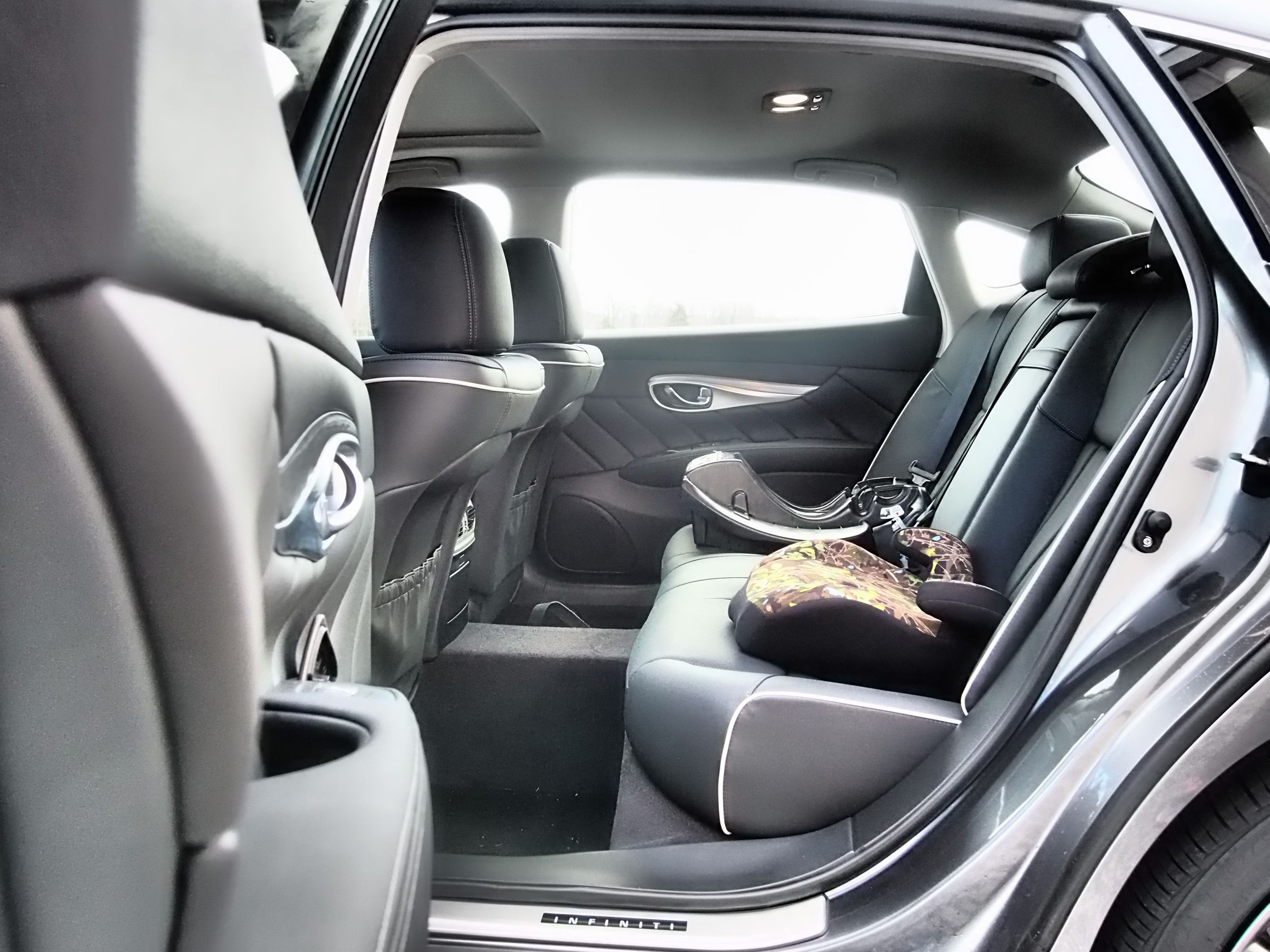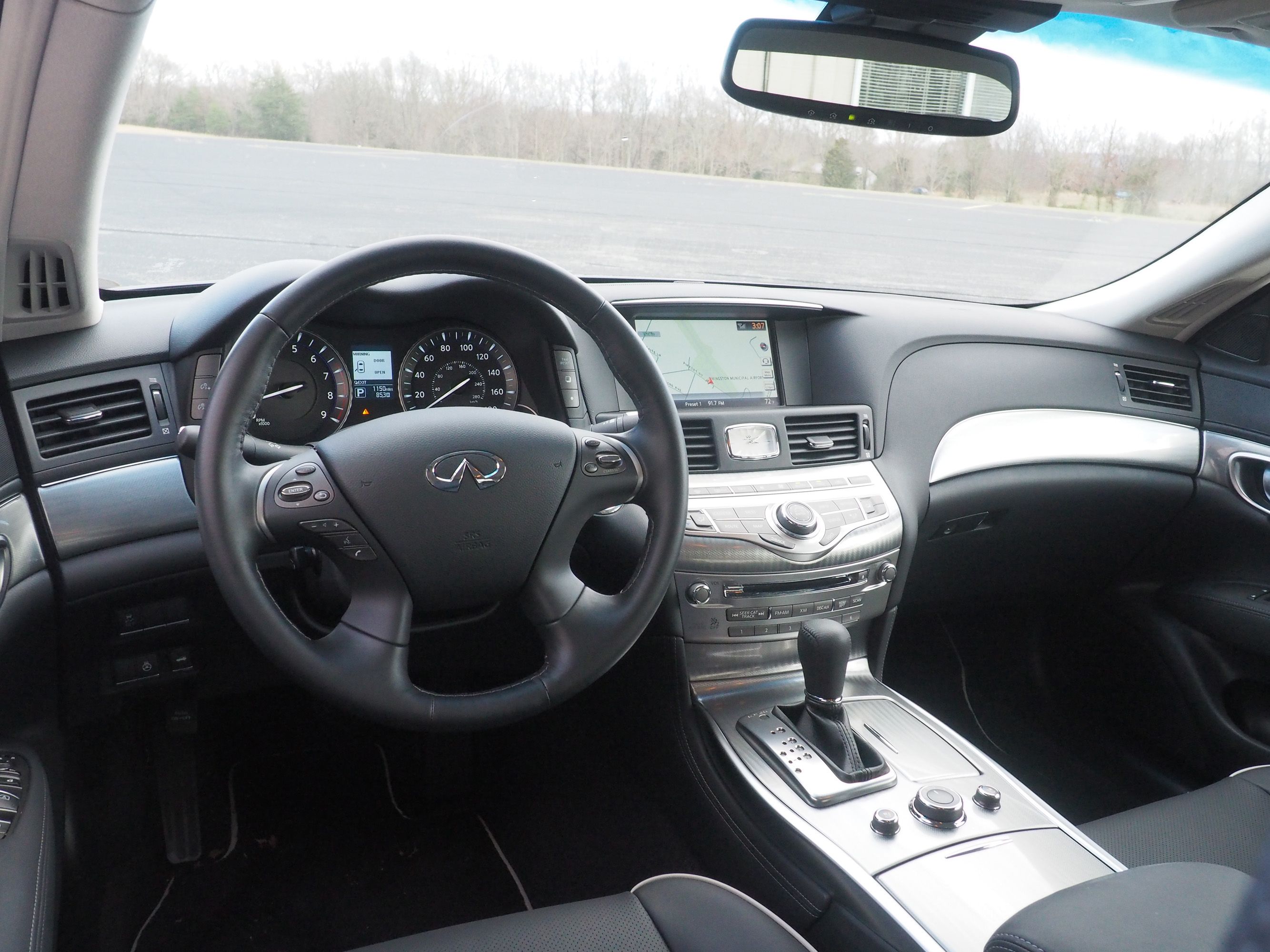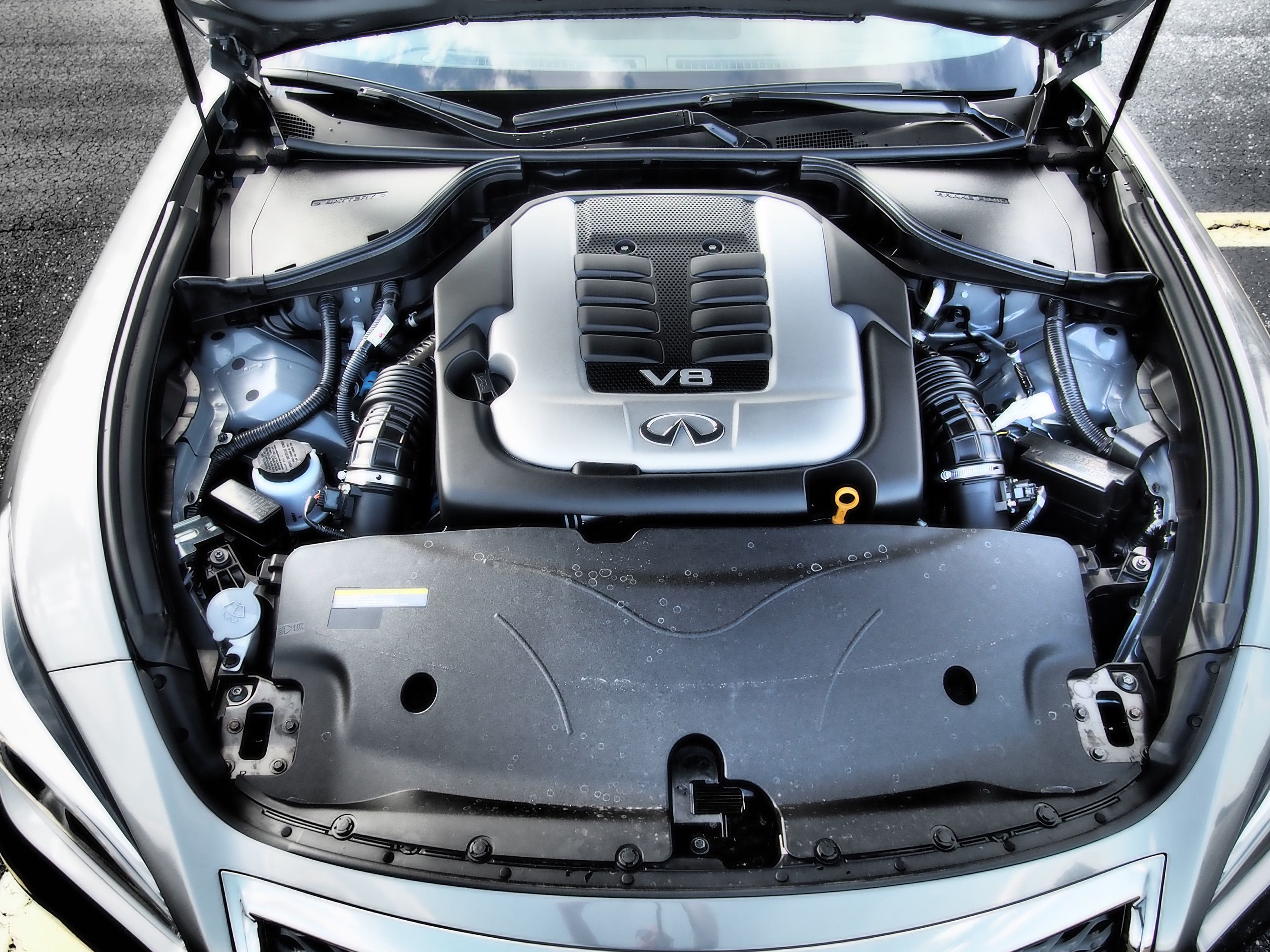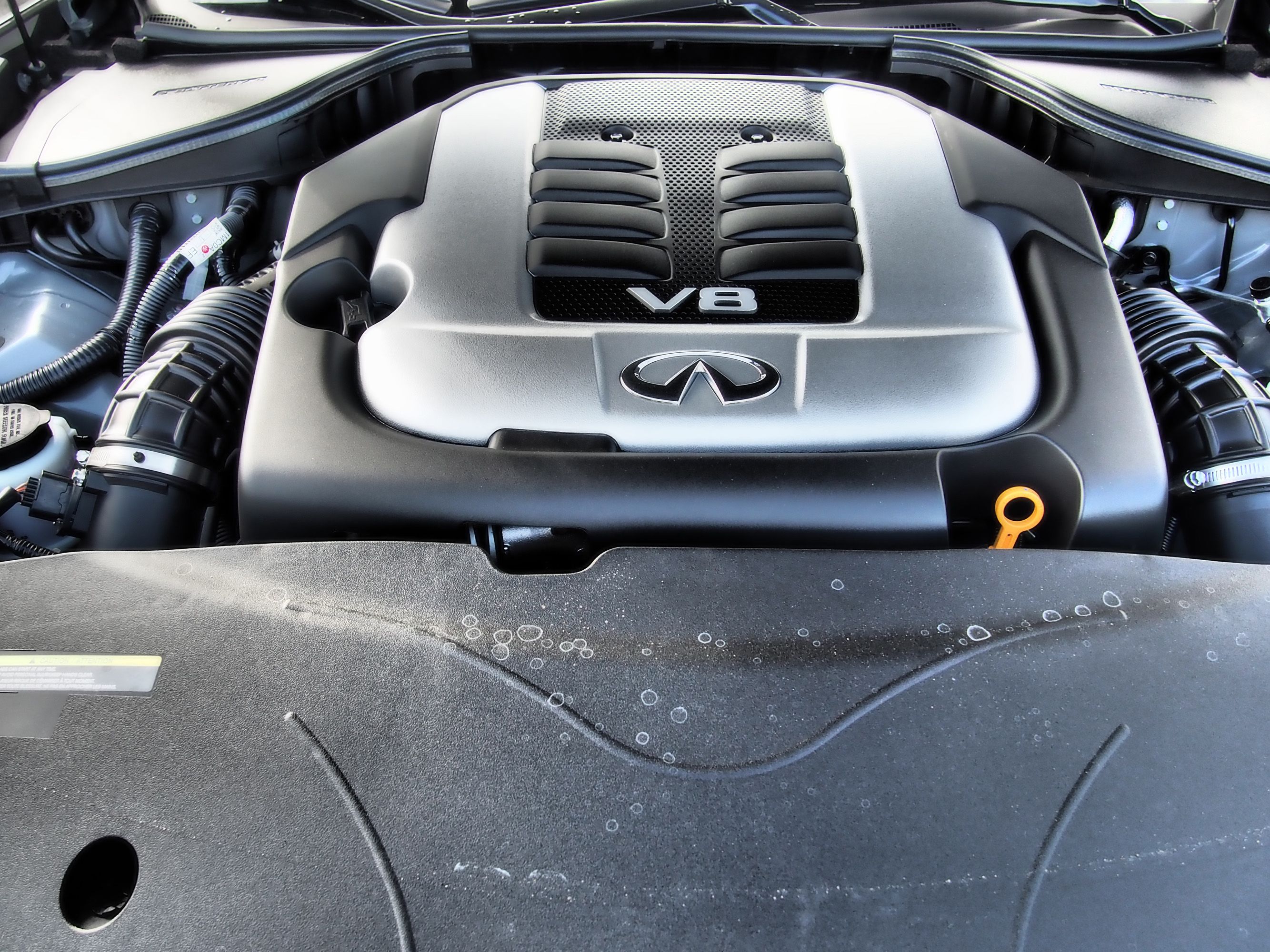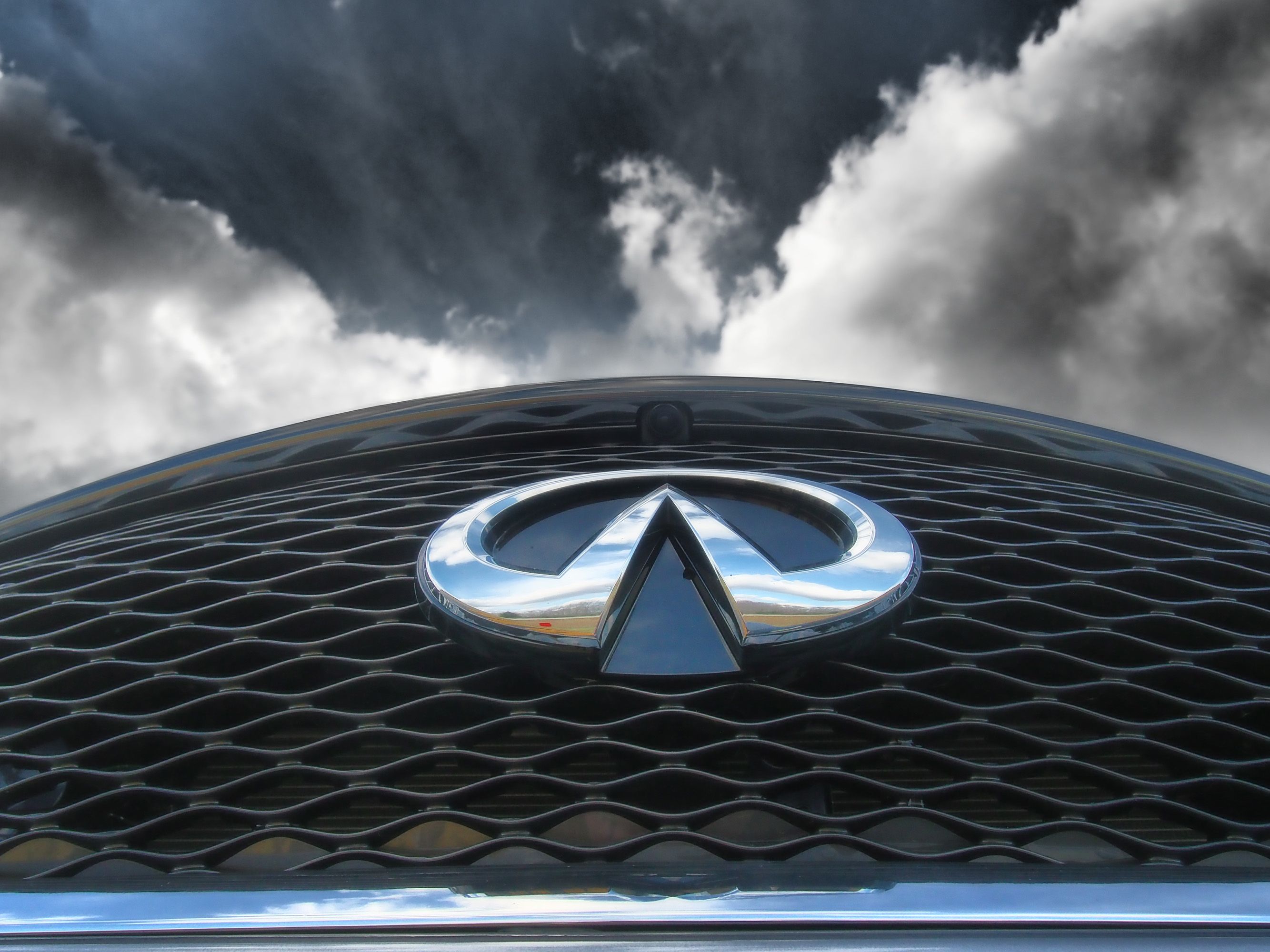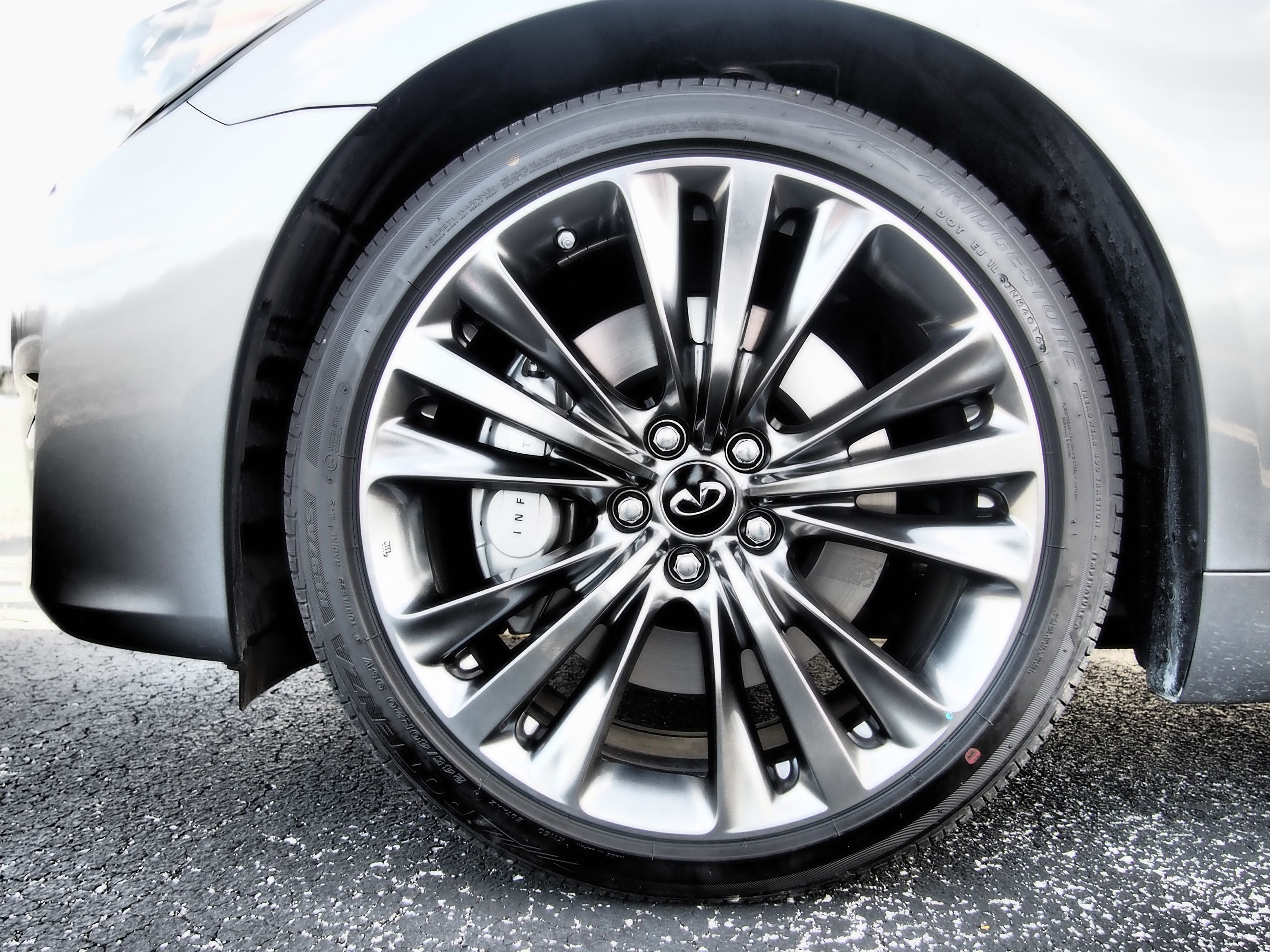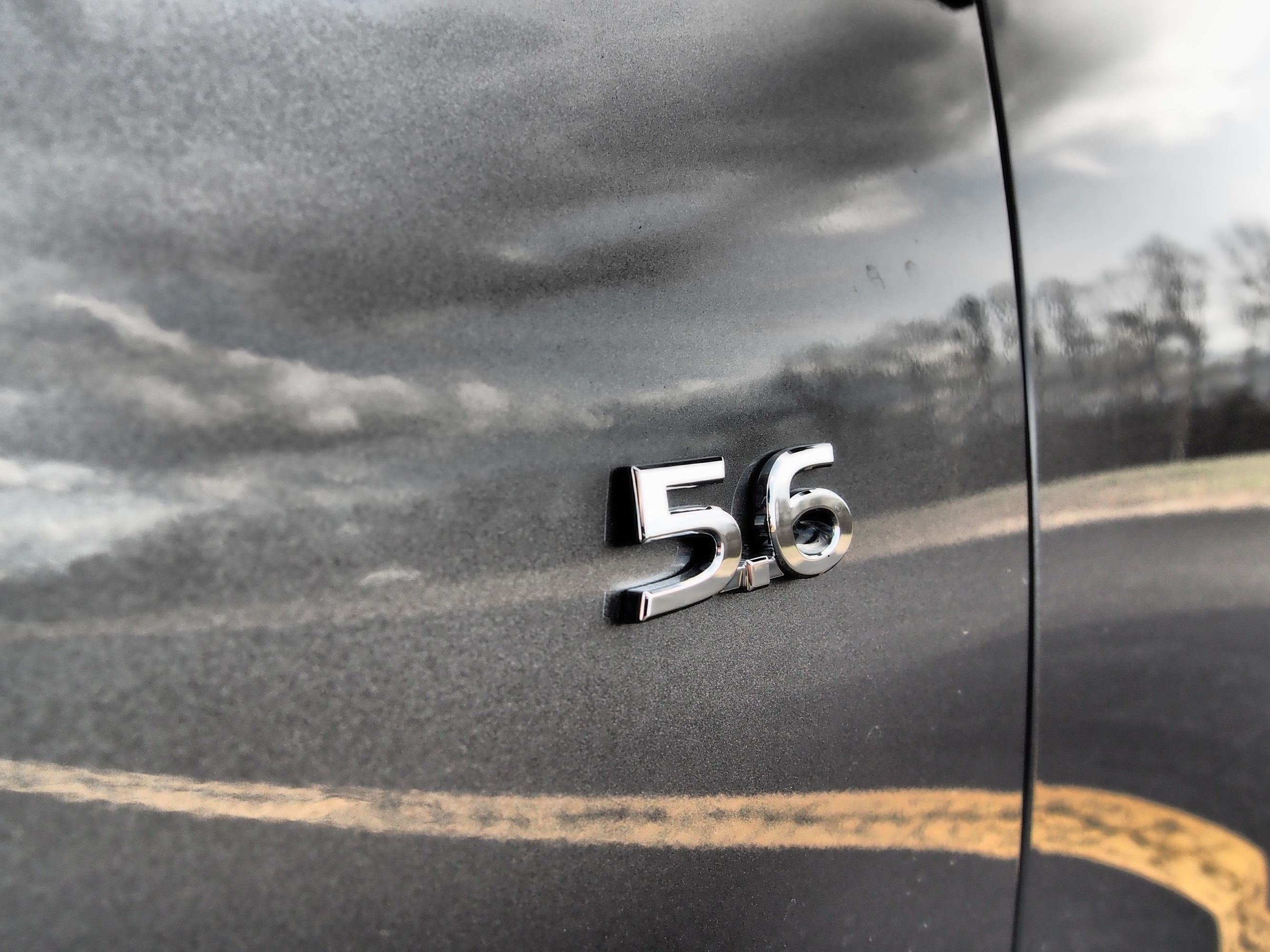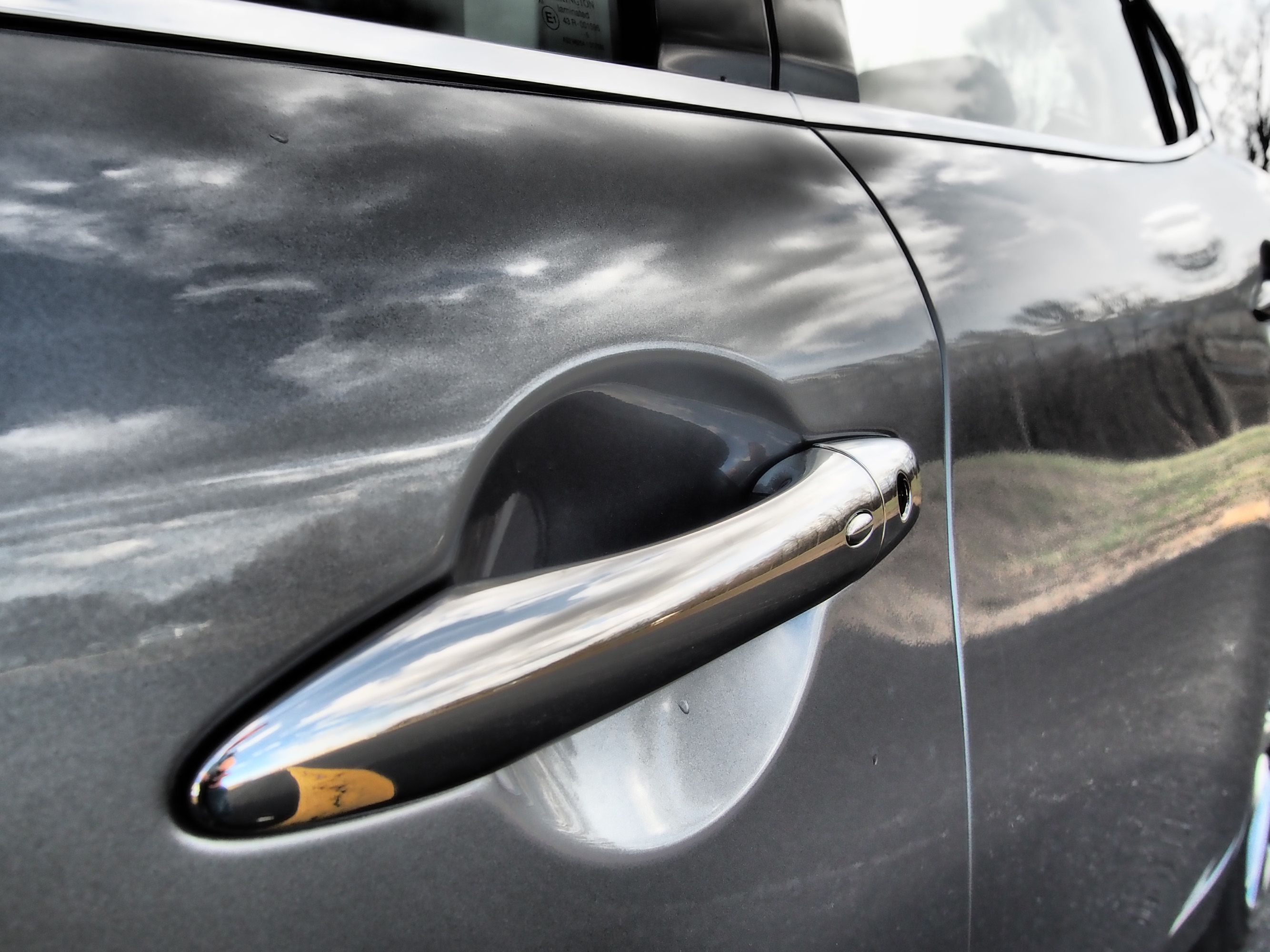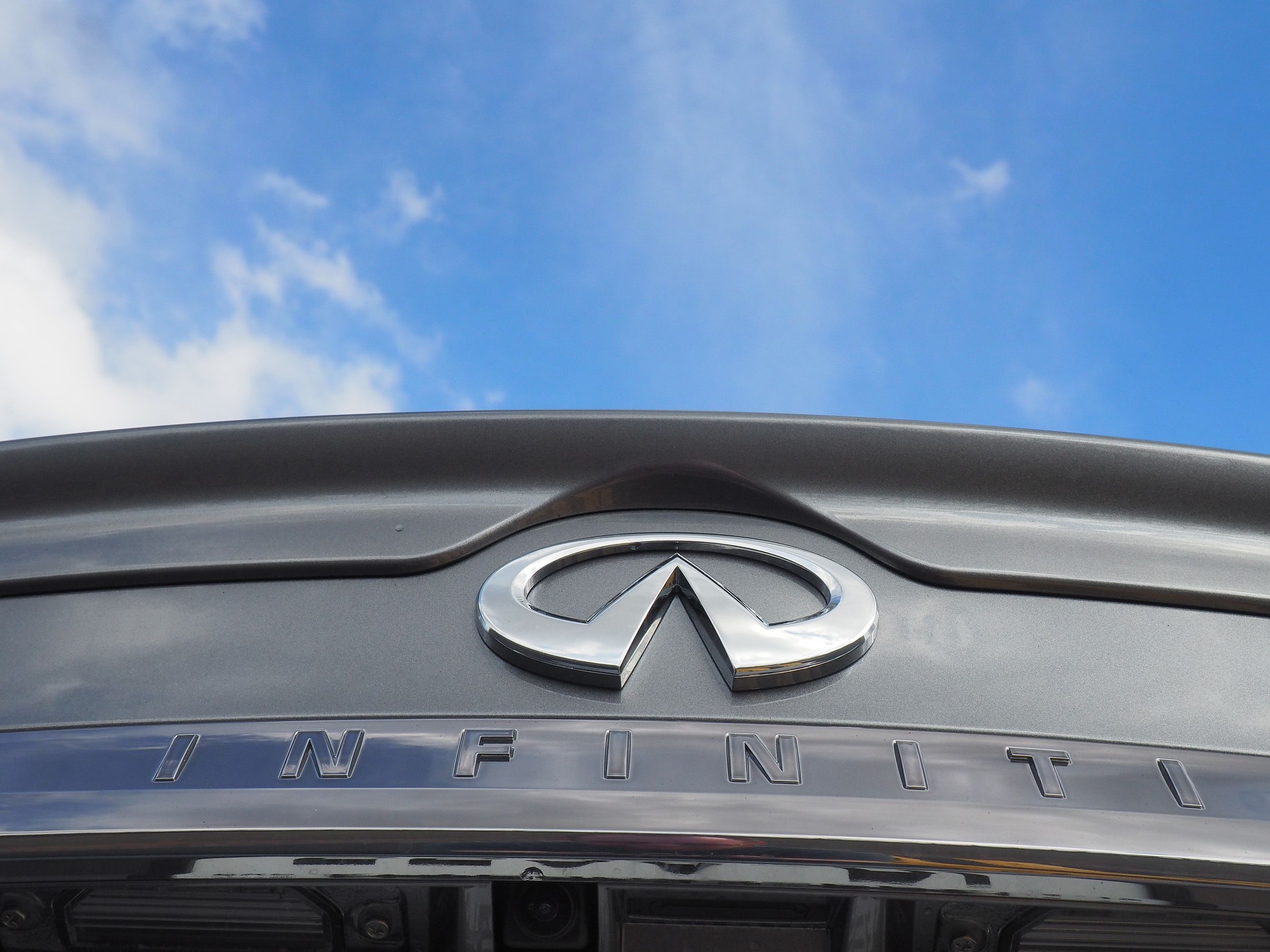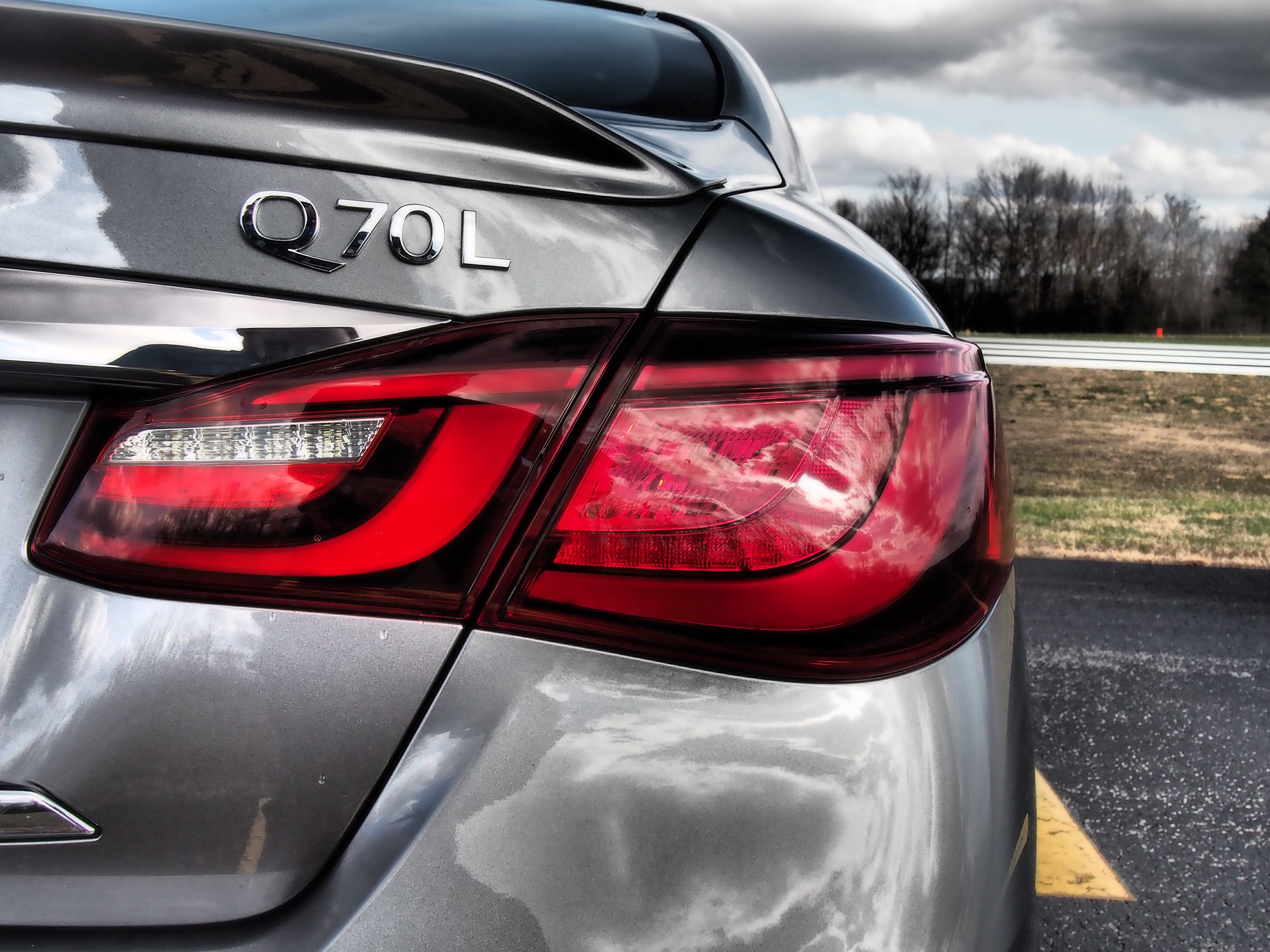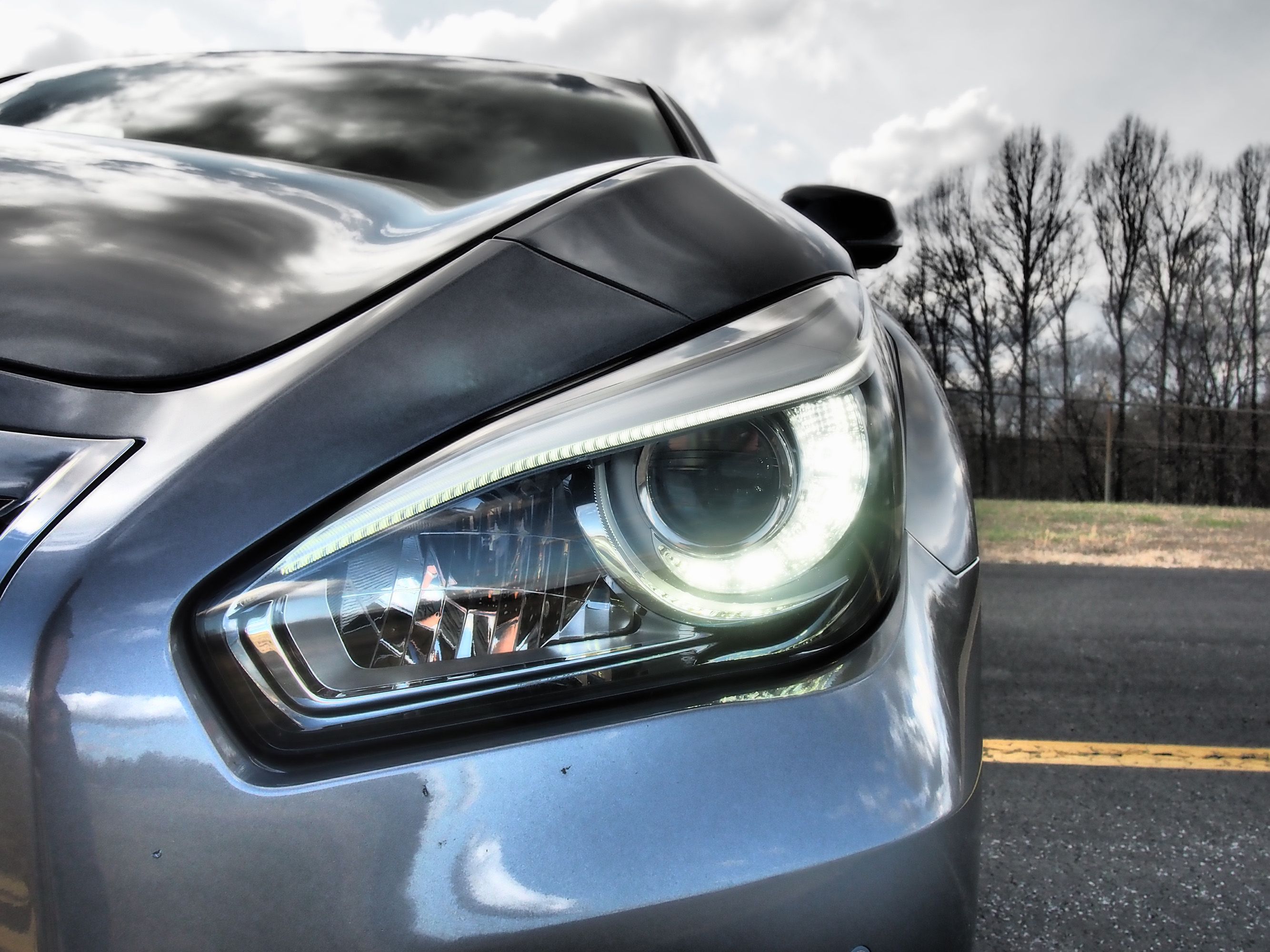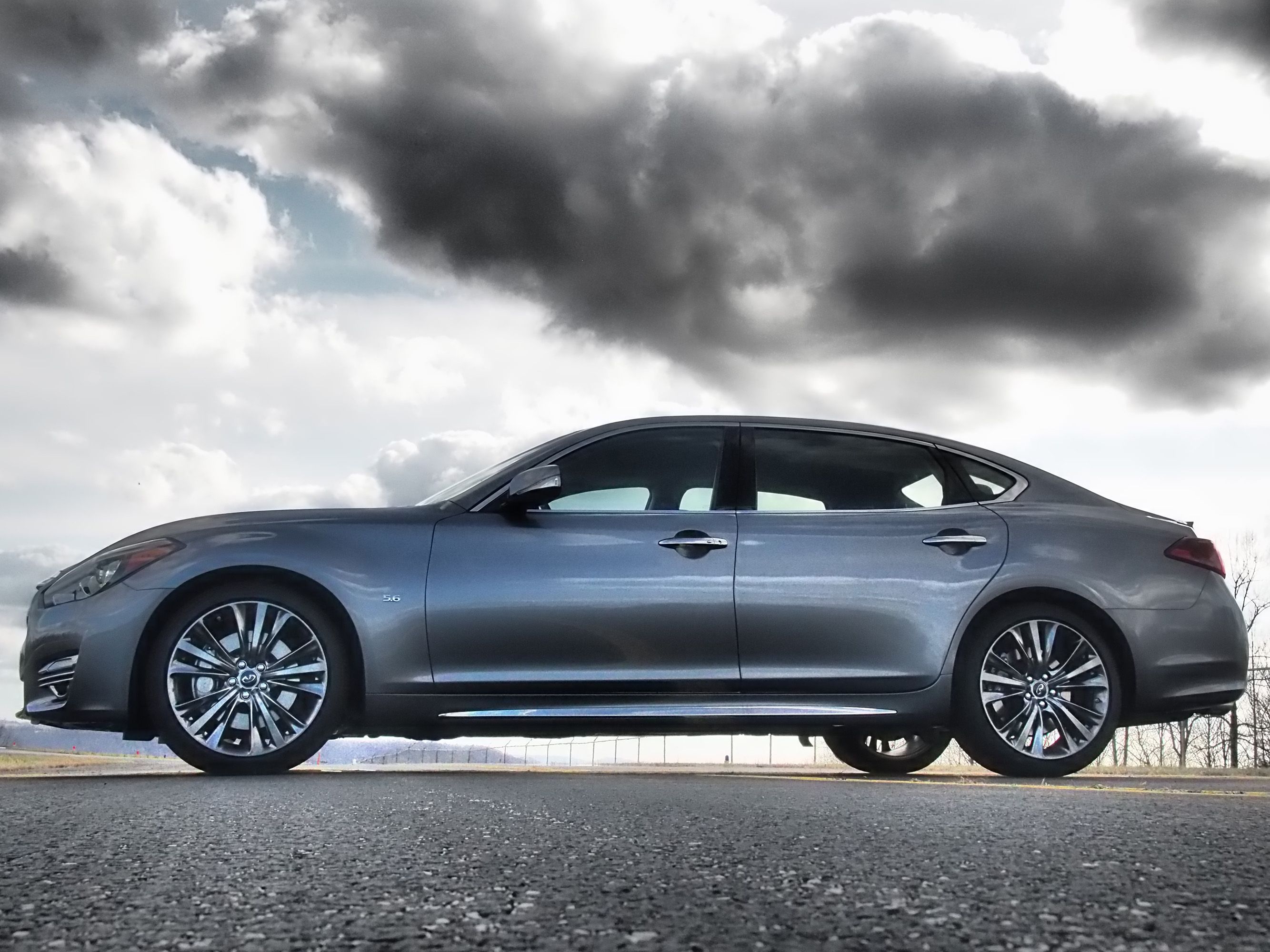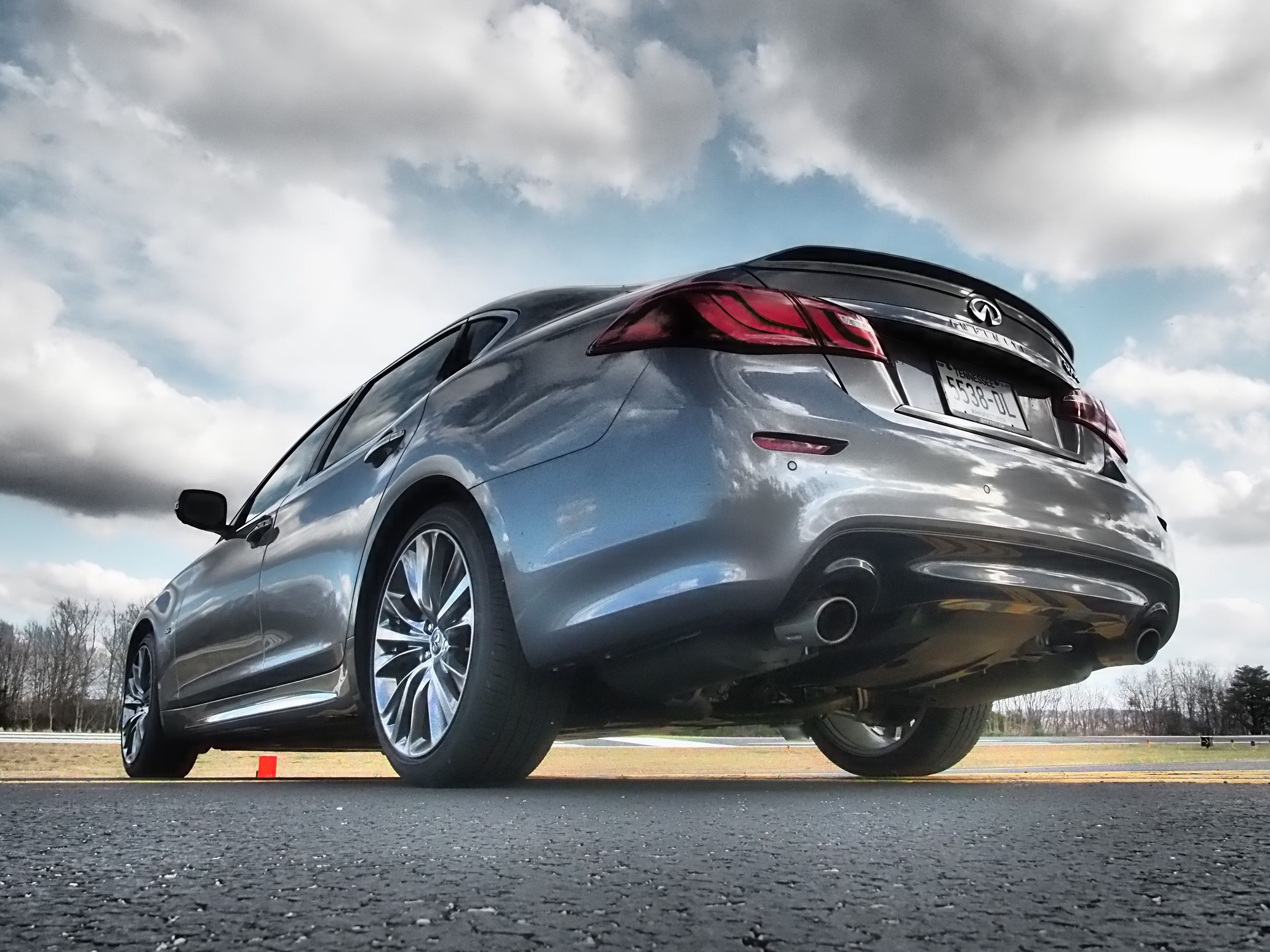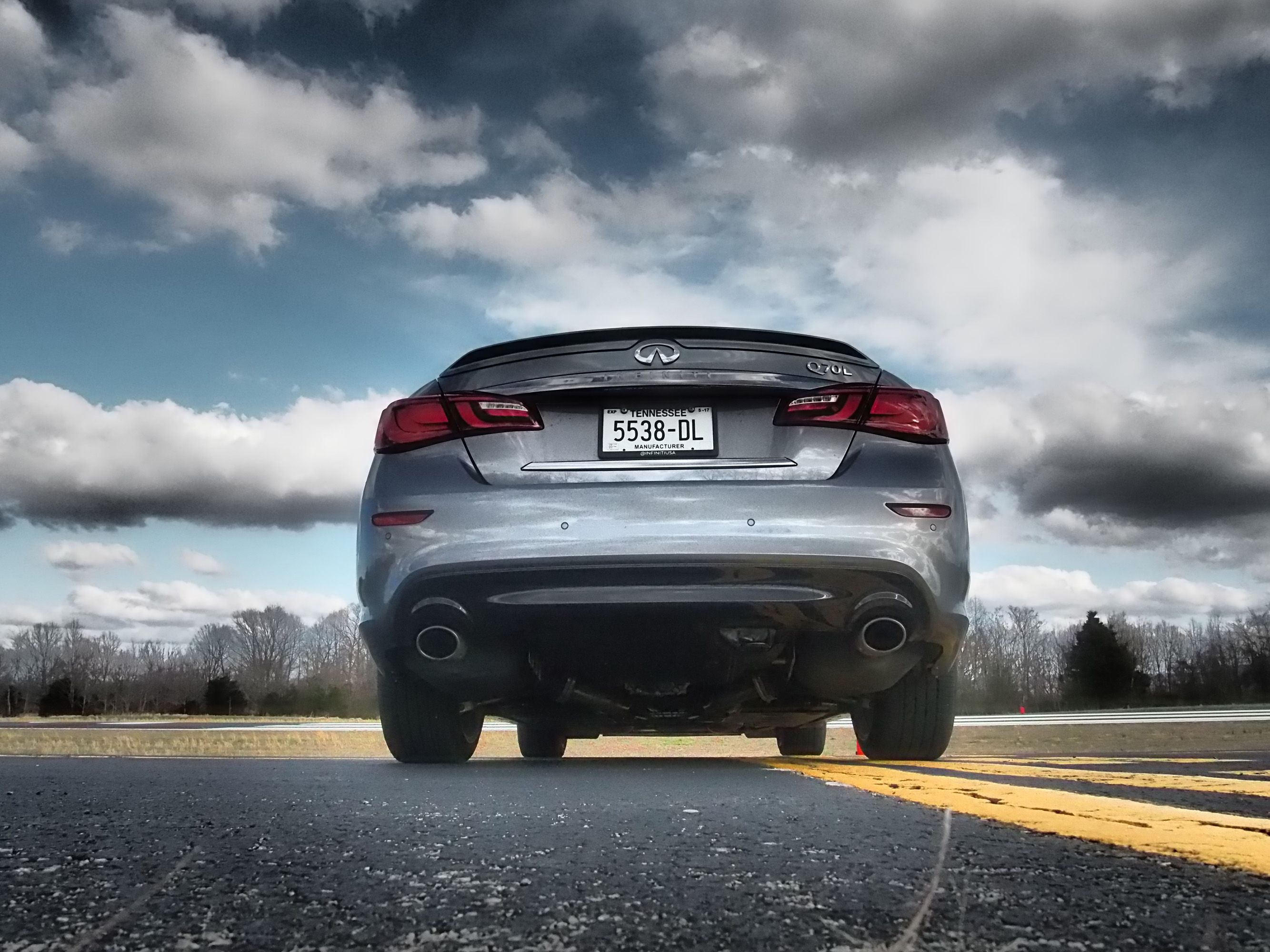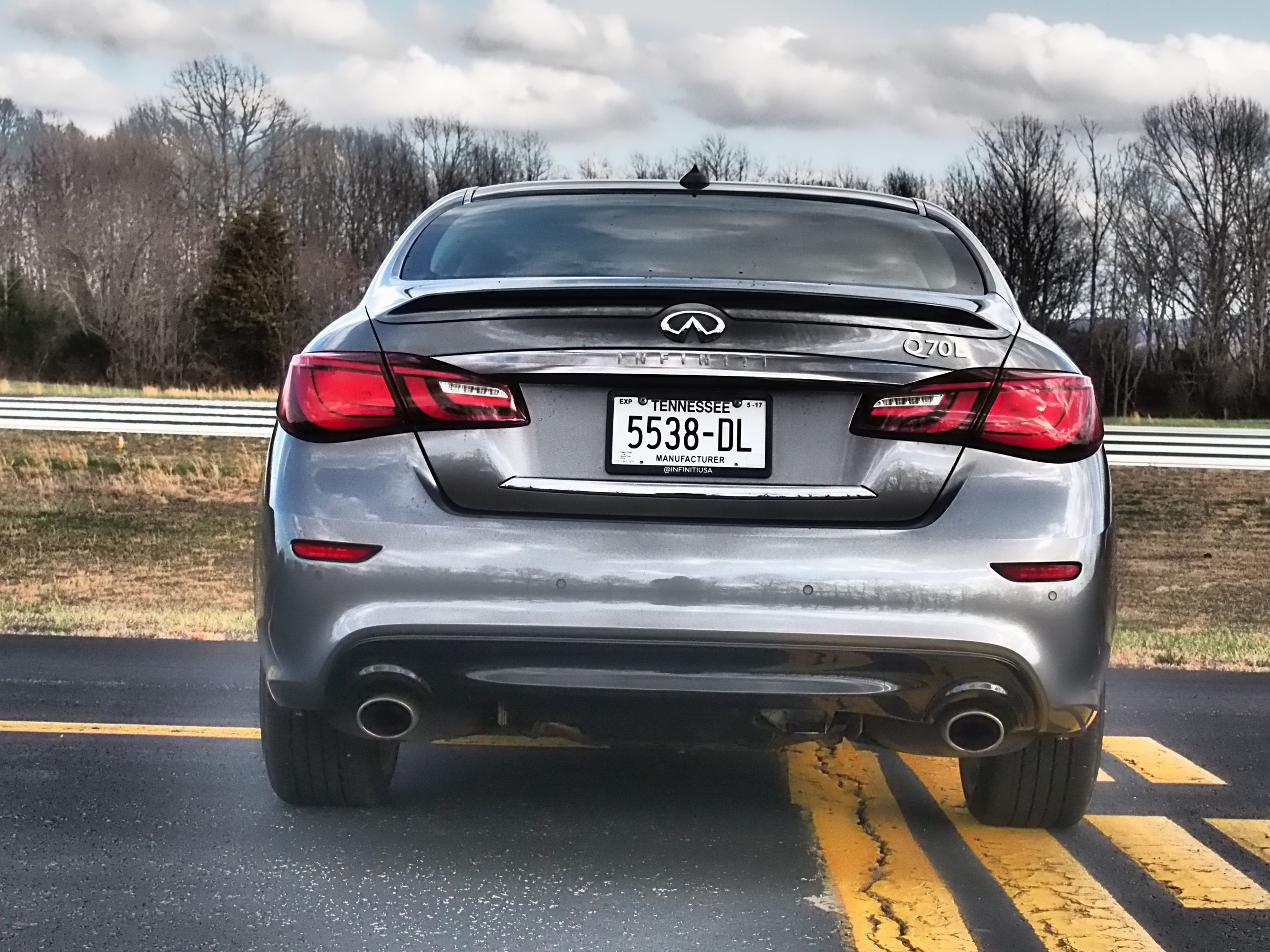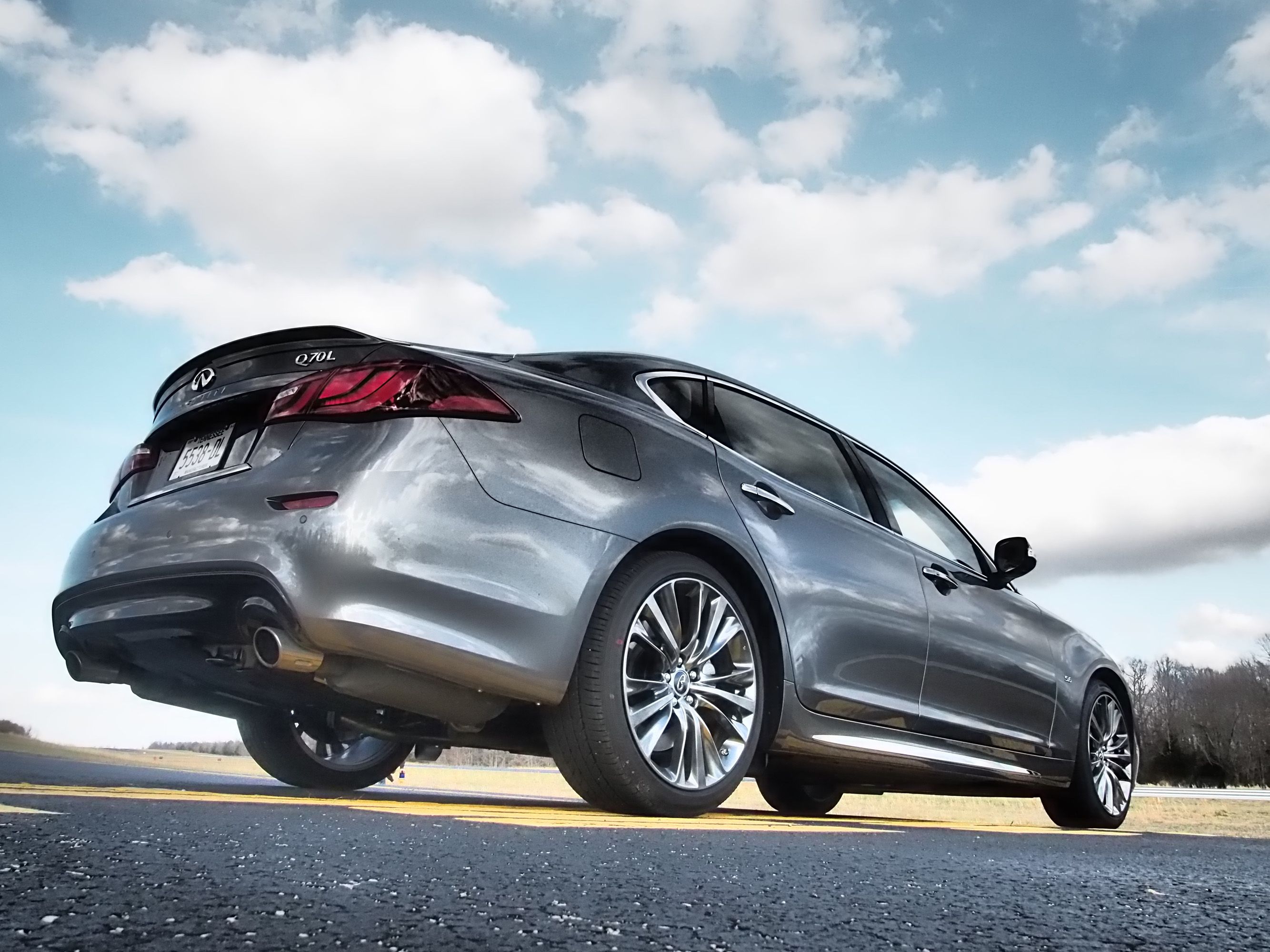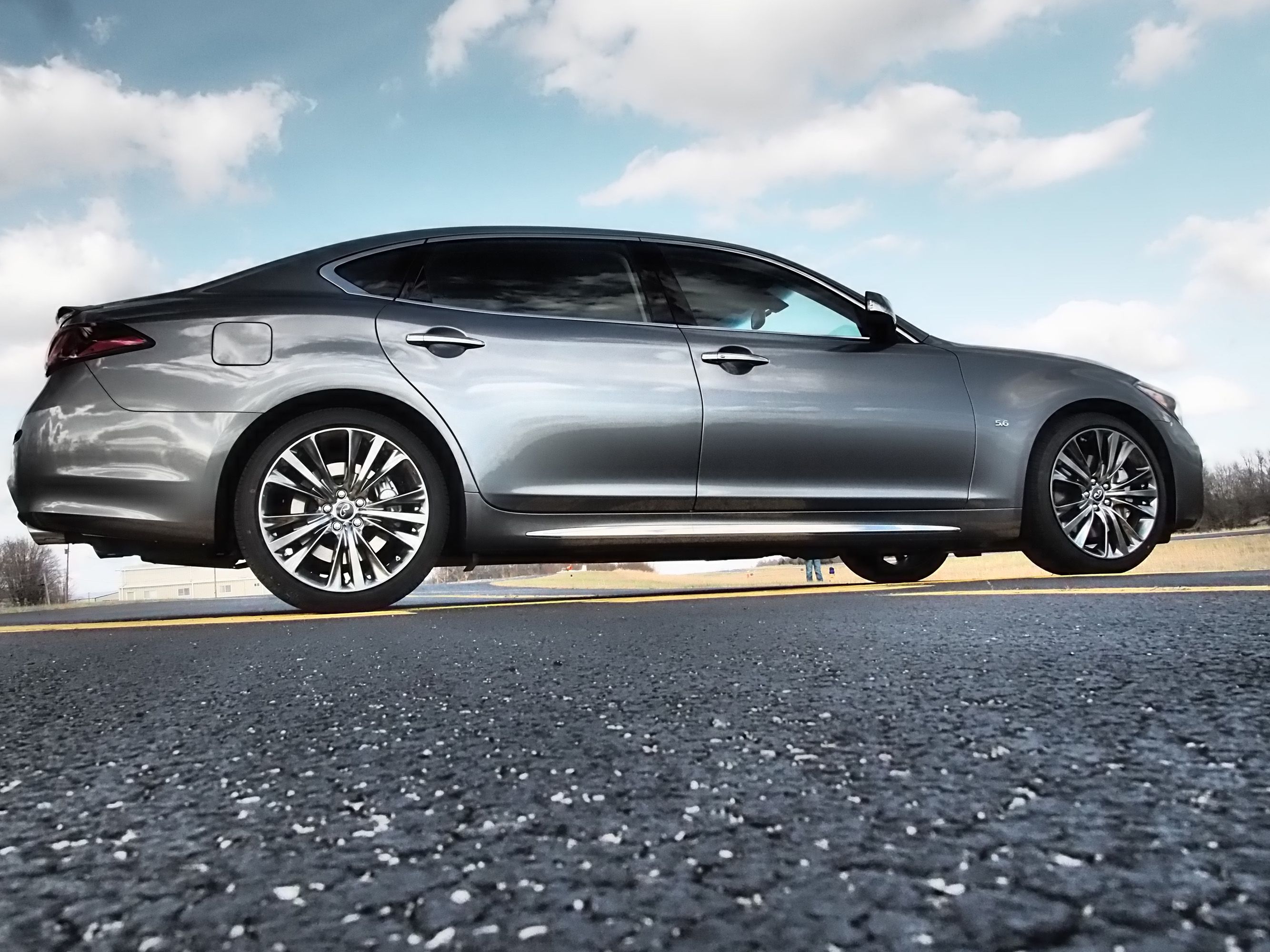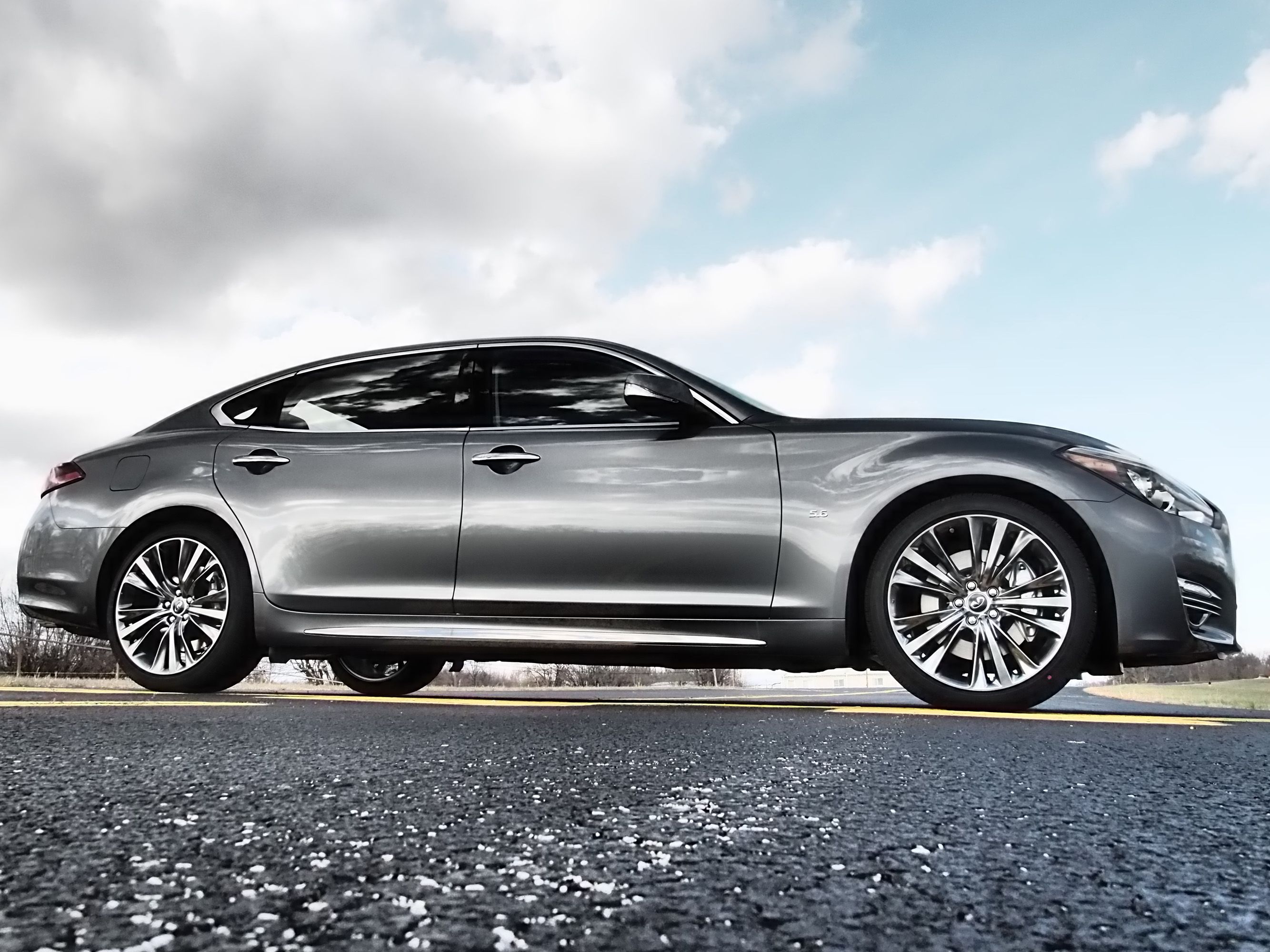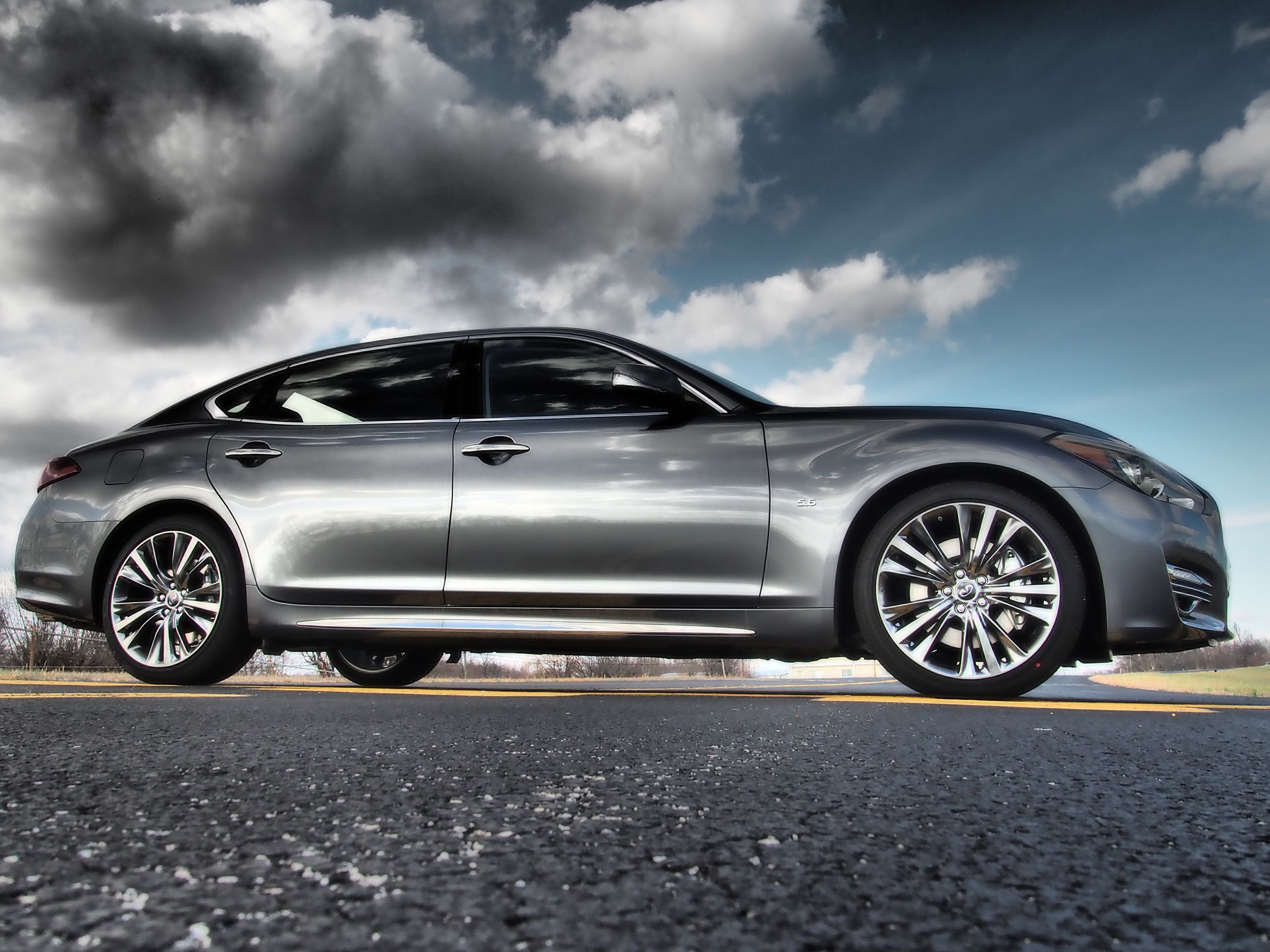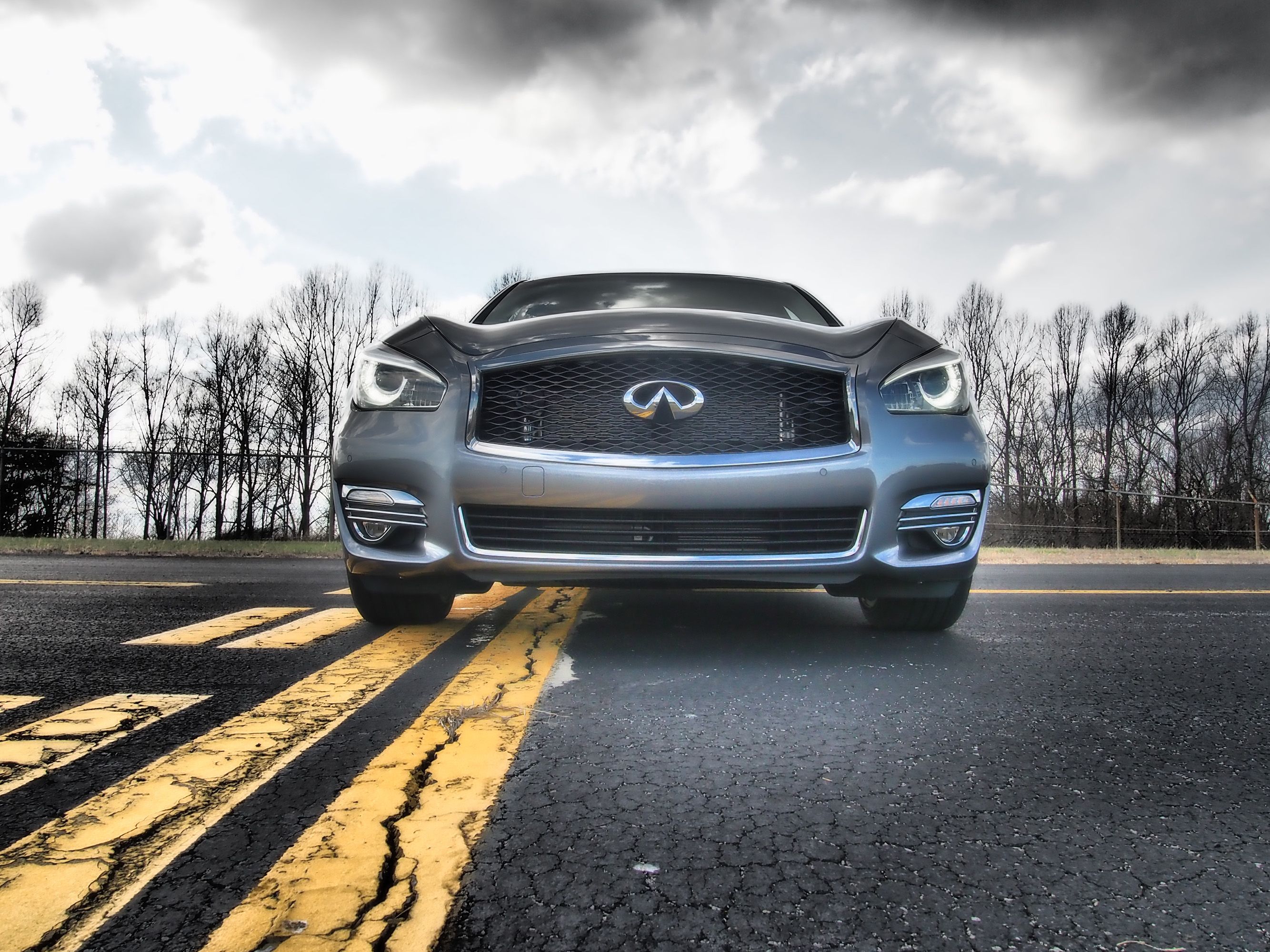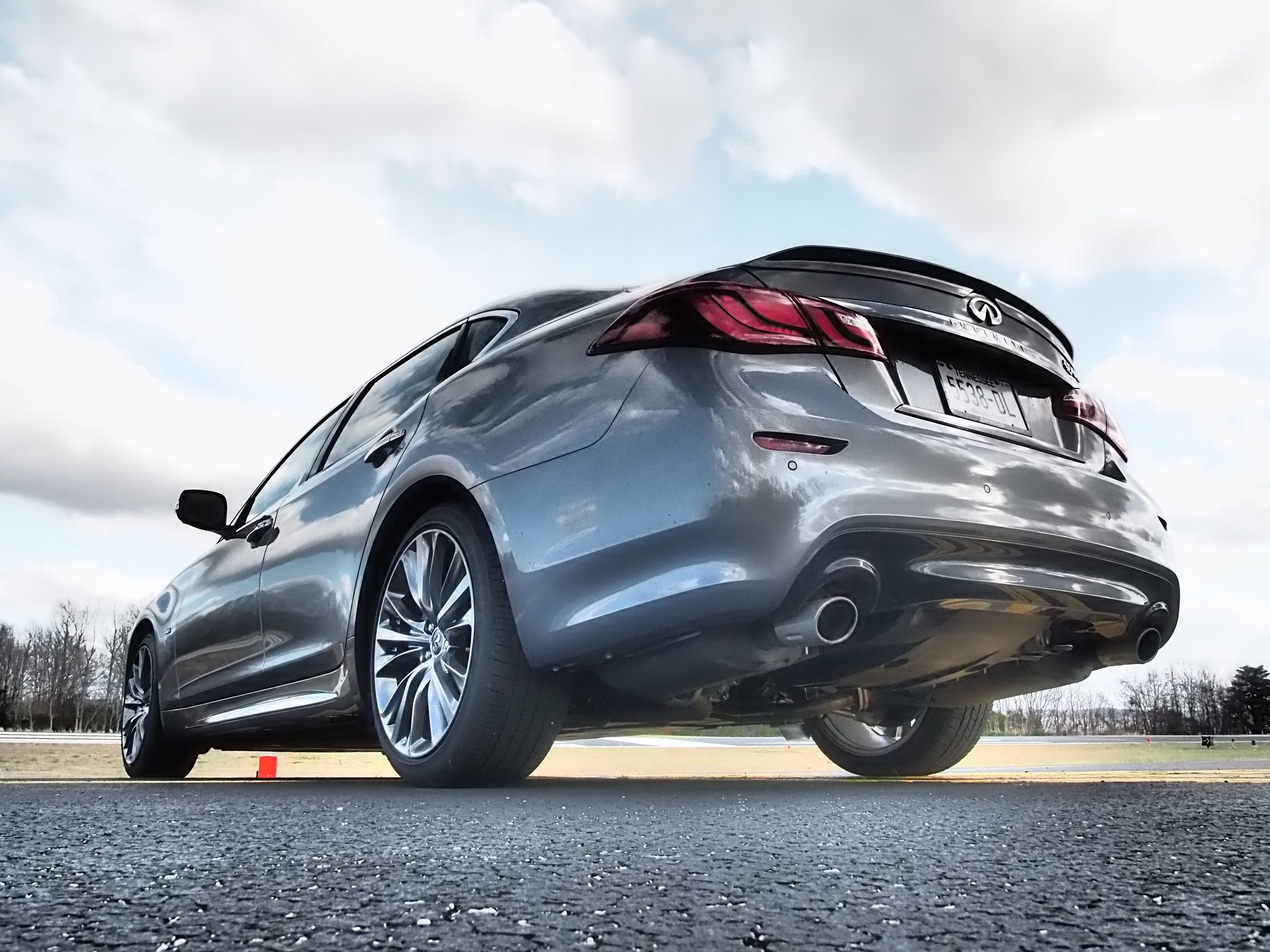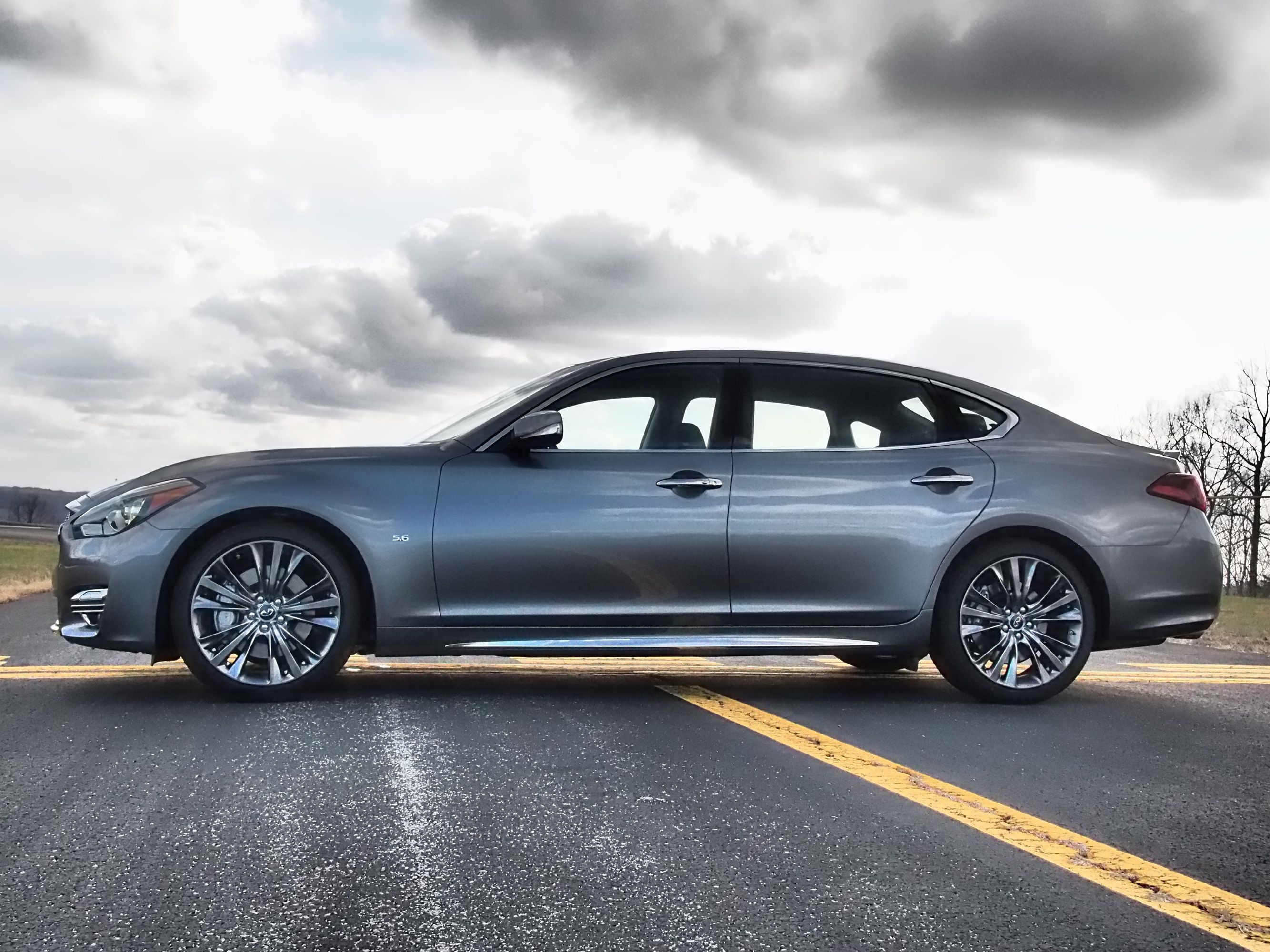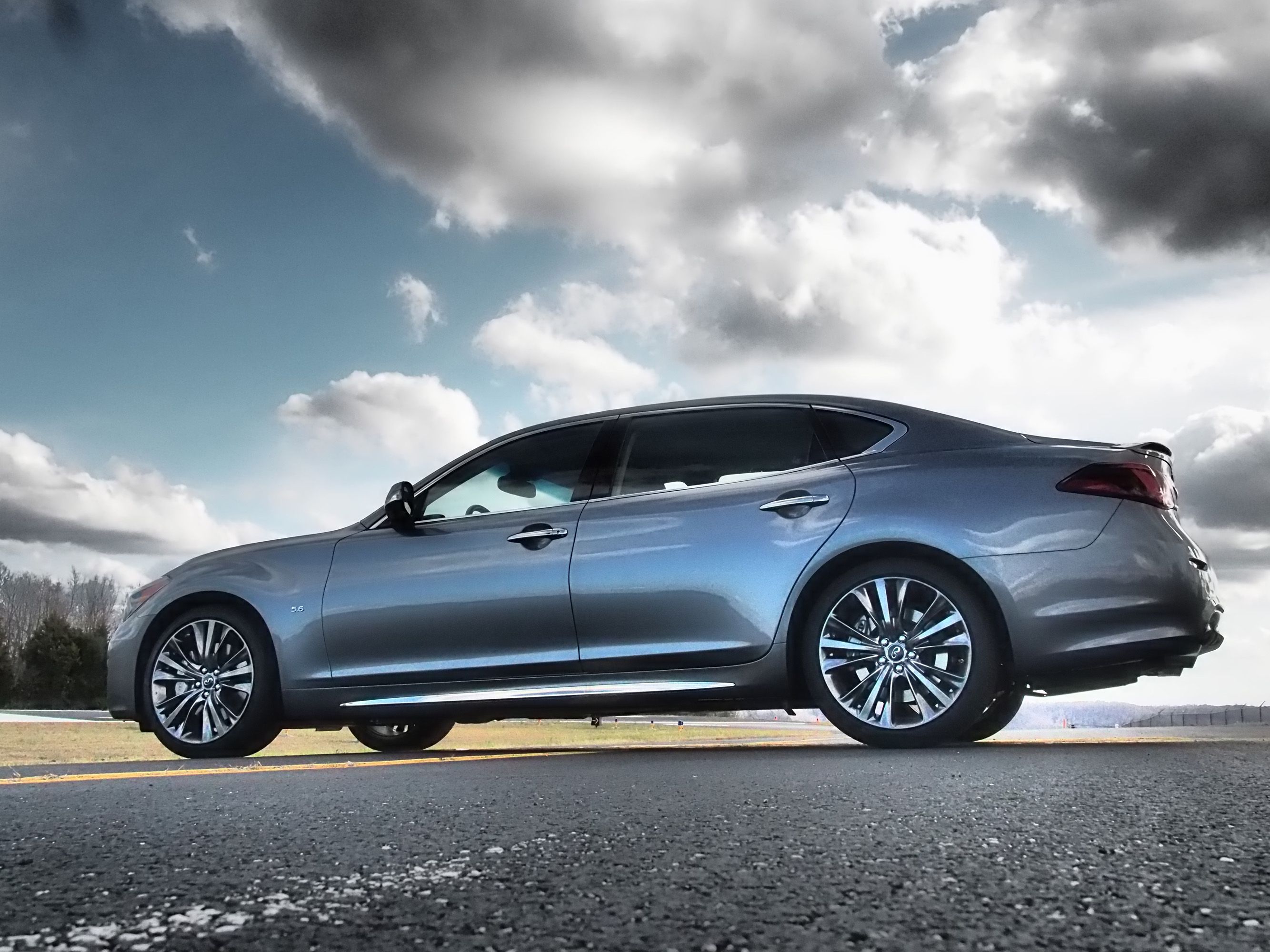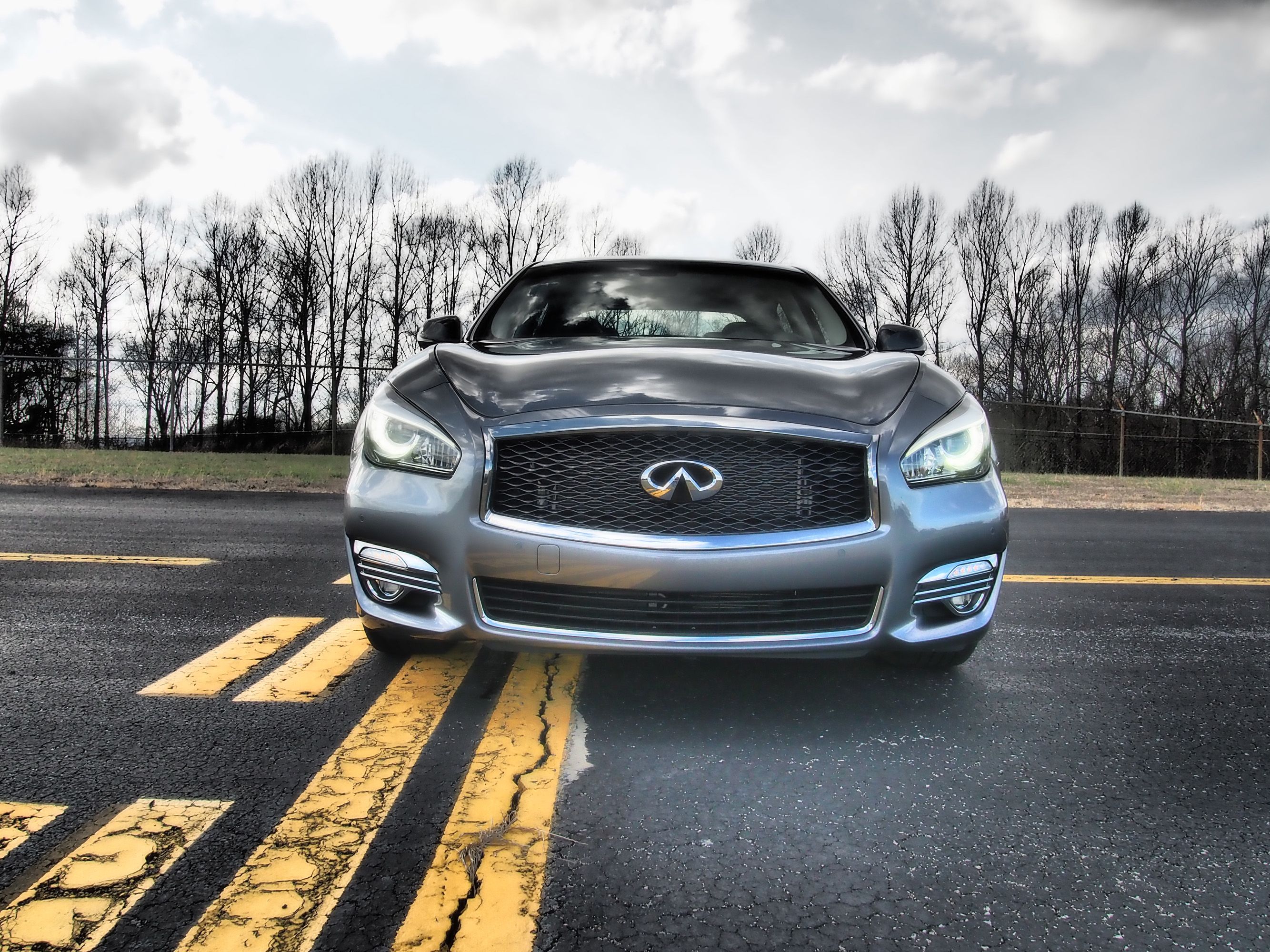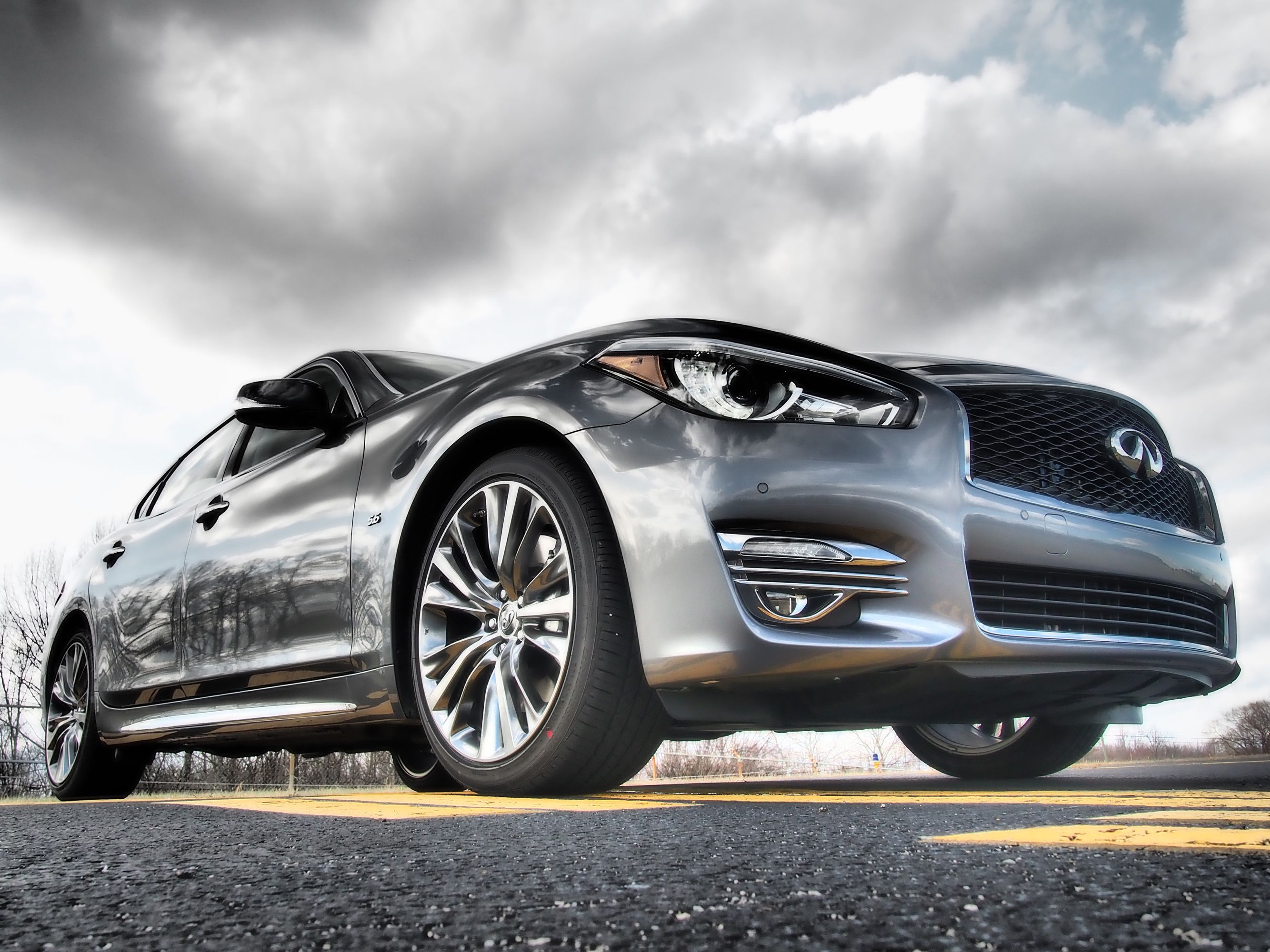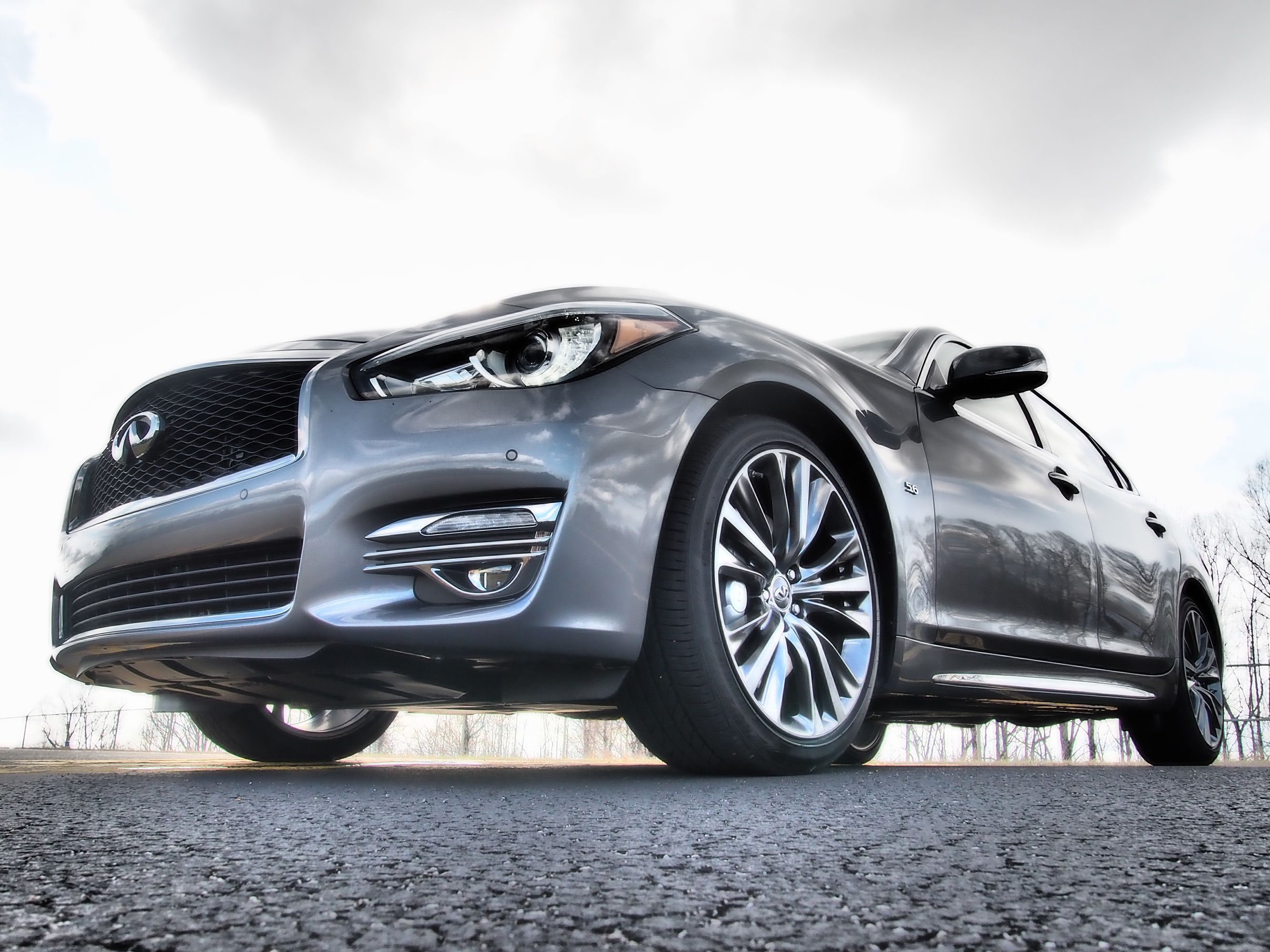Executive limousines are a different breed, and the Infiniti Q70L has its own distinct take on the mid-size executive limo segment. Imagine you took a mid-size, rear-wheel-drive, luxury sedan and stretched its wheelbase a few inches, giving you more rear-seat legroom. Understandably, these cars offer passengers first-class space and amenities. But, does Infiniti have what it takes to earn business in this ultraluxe segment? Established players from Europe have these cars down to a science, and the Q70’s Japanese rivals make a solid case for themselves, too.
I recently spent a week driving the long-wheelbase Infiniti Q70 model and came away thinking it's not quite ready if it's looking to compete with established rivals like the BMW 5 Series, Mercedes-Benz E Class, and Lexus GS. But, it also offers V-8 motivation at a price point where many of its competitors have half as many cylinders. That gives it a lot of appeal to those who appreciate sporty driving. Much like the Infiniti Q60 Red Sport 400 I reviewed recently, the Infiniti Q70L a value leader in its segment – as long as you don’t value the latest-and-greatest infotainment features or the quietest interior more than you value a stonking-fast V-8.
2017 Infiniti Q70 – Driven
- Make: Array
- Model: 2017 Infiniti Q70 – Driven
- Engine/Motor: V8
- Horsepower: 416 @ 6000
- Torque: 414 @ 4400
- Transmission: seven speed automatic
- [do not use] Vehicle Model: Array
Design Notes
The 2017 Infiniti Q70L is a handsome car to look at.
The front has Infiniti’s corporate grille with a diamond-mesh insert. The hood bulges at the center and over each front wheel, giving a hint of the power that lies beneath.
From the side view, the Infiniti Q70L features flowing, sexy lines above the beltline, with a solid-looking middle area that adds mass to the design. The lower part of the Q70L’s profile has two separate sills, one stamped into the lower part of the door skins, and one at the actual sill. This further adds to the sense of solidity and strength.
Astute observers will be able to identify the Infiniti Q70L from the side by noticing the rear doors are longer than standard Q70 models (and longer than its competitors’ rear doors, too). It struck me a bit like an E32 7 Series BMW. Fans of that car can instantly identify whether it’s an “iL” by taking one glance at the rear doors.
At the rear, the 2017 Infiniti Q70L has a tall trunk height, but a relatively short decklid. The former makes for a roomy trunk – Infiniti says it’ll hold 14.9 cubic feet of cargo. The latter feature communicates the Q70L’s rear-wheel drive sportiness.
Infiniti’s interior design comes under fire sometimes for appearing too dated. The 2017 Infiniti Q70L struck me as somewhat dated, mostly because of its infotainment system. The dashboard carries the twin-cockpit design I experienced in the Q60 earlier.
The Infiniti Q70L lacks some of the gee-whiz interior design of, say, the Mercedes-Benz E300 or Audi A6. But I’m a fan of simple, purposeful designs, and that perfectly describes the 2017 Infiniti Q70L, from its no-nonsense steering wheel layout to its analog instrument cluster. In a way, it’s kind of nice to know that not everyone is succumbing to the pressure to turn every gauge and interface into a complex glass screen.
Exterior dimensions
|
Wheelbase (Inches) |
120.1 |
|
Overall length (Inches) |
202.0 |
|
Overall width (Inches) |
72.6 |
|
Overall height (Inches) |
59.1 (RWD) |
|
Front track width (Inches) |
62.0 |
|
Rear track width (Inches) |
61.8 (RWD) |
Interior Experience
Having said that, I think Infiniti would benefit from an infotainment system redesign for the Q70L. Those familiar with Nissans of the early 2010s will recognize the infotainment control setup.
As we move into the last of years of the decade, most automakers have improved their infotainment systems by leaps and bounds since the basic bones of the Q70L’s infotainment system debuted in vehicles like the 2013 Nissan Pathfinder. It features a central control dial and several function buttons mounted on an upward-facing area of the dashboard, which proved distracting to use. In a nutshell, Infiniti’s approach here is dated. The twin-screen system from the Q60 would be more fitting for this vehicle.
The level of noise, vibration, and harshness (NVH) also could use some work. While impact absorption was admirable, lots of tire roar made it into the cabin, which seemed to serve as an echo chamber. I think it would prove tiring on long drives.
Infiniti did a lot of things right in the 2017 Q70L’s interior, however. It has tons of legroom – 44.4 inches front, 41.8 inches rear – and it has 110 cubic feet of total passenger volume. Seats are well-done for both front and rear occupants, with soft leather and tasteful design that proved comfortable during my week with the car. They should age gracefully. The front bucket seats were heated and ventilated. An interesting throwback in the rear door arm rests: ashtrays.
When getting in or out of the Q70L, the doors have a very Nissanesque lightness to them, though they shut solidly. Another area where Infiniti’s Nissan parentage was evident was the lower part of the steering wheel, where the spokes were covered in hard plastic. But overall, the interior was luxe and leather-filled – a fine place to while away the miles between important meetings, as captains of industry do.
Interior dimensions
|
Head room front/rear (Inches) |
39.1/37.7 |
|
Shoulder room front/rear (Inches) |
58.4/55.2 |
|
Hip room front/rear (Inches) |
54.3/53.5 |
|
Leg room front/rear (Inches) |
44.4/41.8 |
|
Knee room front/rear (Inches) |
27.7/32.5 |
The Drive
The 2017 Infiniti Q70L I drove was packing Infiniti’s 5.6-liter naturally aspirated V-8 under the hood. It’s a wonderful engine, offering 416 horsepower at 6,000 rpm and 414 pound-feet of torque at 4,400 rpm. Flip the drive mode selector dial in the center console to “Sport,” and this big car will hustle, with sharp throttle response and quick shifts from its electronically controlled seven-speed automatic gearbox.
In keeping with Infiniti’s decision to rename all of its cars “Q-something,” the Q70L proved to be a true Q-ship. The big V-8 was willing to giddyup, and for a relatively large, heavy car (202 inches long and 4,129 pounds) it handled itself pretty well in the curves. It isn’t trying to be a Nürburgring record-setter and there’s nothing about its design that would make anyone suspect that. It’s not trying to be something it isn’t. It’s confident, but not overstated. I like that in a car.
The majority of competitors in this segment come with four-cylinder engines as standard equipment, including BMW 5 Series, Jaguar XF, and Mercedes-Benz E-Class. Many don’t even offer a V-8 at all, unless you select a performance model like the $104,000 Mercedes-AMG E63. So the available V-8 power of the Infiniti Q70L is a unique selling point for some shoppers, especially those of us who don’t want to spend six figures. The tested Q70L had an MSRP of $69,055, which comfortably undercut the last four-cylinder BMW 530i that I drove by about $5,000.
Steering was interesting in the Q70L. While it had an overboosted feel when cranked into a turn, it also allowed road conditions to be transmitted to my hands. Some reviewers dislike feeling any road imperfections through the steering wheel, especially in a luxury car, but I found it refreshing in a segment that too often feels totally numb. With a slight retune of the power steering booster to reduce some of that too-easy turning effort at highway speeds, this could be the most communicative steering setup in midsize luxury sedans, bar none. I liked the Q70L’s steering better than the tiller in the BMW 530i and in the Lexus GS 350, but not quite as well as I liked the steering setup in the Jaguar XF.
Drivetrain Specifications
|
Type |
VK56VD DOHC 32- valve |
|
Cylinders |
V8 |
|
Displacement |
5.6 liters |
|
Horsepower (hp) |
416 HP @ 6,000 RPM |
|
Torque (lb/ft) |
414 LB-FT @ 4,400 RPM |
|
Transmission |
Seven-speed automatic |
The Competition
2018 Jaguar XF
Among the Q70L’s competitors, the Jaguar XF probably puts up the best fight on value-for-money. Though it lacks V-8 power as an option, its 3.0-liter supercharged V6 offers plenty of scoot for most of us.
Though I find the XF’s interior a bit less desirable than the Q70’s, Jaguar’s infotainment system is more modern. And for those who like their cars to have a little character, the Jag’s powertrain delivers, with an old-school European rumble emanating from the V-6 and plenty of road feel in the chassis. Its exterior design is downright sexy from every angle, where the Q70L looks a bit plump from some angles.
A well-equipped Jaguar XF with all-wheel drive and that supercharged V-6 can be had in the mid-$60K region.
Read our speculative review on the 2018 Jaguar XF.
2017 BMW 5 Series
Like its German counterpart, the Mercedes-Benz E-Class, the BMW 5 Series doesn’t come in V-8 flavor unless you pony up for the crazy-fast special model – in this case, the $73,400 M550i xDrive. The majority of 5’ers are now powered by a 2.0-liter TwinPower turbocharged four-cylinder engine, while a few up-optioned versions with 540i badges still carry a 3.0-liter inline-six. If you’re lucky, you may even spot a plug-in hybrid 530e iPerformance, which has that 2.0 TwinPower turbocharged four mated to a 111-horsepower electric motor.
BMW definitely has the edge on Infiniti where interior niceties are concerned. The front seats are otherworldly in upper-trim models, with extendable thigh supports and headrests that can be custom-curved to the occupants’ heads. BMW iDrive is worlds ahead of Infiniti’s aged infotainment system, as well, and the 5’er has a serenely quiet interior compared to the Q70L, though the 5 Series suffers is in real-world rear-seat legroom. The Q70L eats its lunch there.
You pay dearly to play in the Bavarian leagues. The 530i starts at $53,500 and quickly escalates. A well-trimmed 530i will get you into the $75,000-to-$80,000 range almost as quickly as it gets you from zero to 60. If you want inline-six power, the starting price creeps up to $58,750. Decking out the M550i xDrive will cost more than $100,000.
Read our full review on the 2017 BMW 5 Series.
2019 Lexus GS
Infiniti’s closest rival may indeed be Lexus, and the GS is the mid-size competitor to the Infiniti Q70L. But the GS is way down on rear seat legroom compared to the acres of space in the Q70L, and there is absolutely no way to get a V-8 in the Lexus. But the Lexus offers a more performance-tinged version of the midsize luxury sedan despite that missing V-8. It feels more nimble when chucked around curves.
Some things about the Lexus GS split people into love-it-or-hate-it groups. The infotainment system, while well done, is controlled by a mouse-like device in the center console that some love, and some hate. The exterior design, particularly the “spindle” grille, is loved by some and reviled by others.
A Lexus GS with a four-cylinder turbocharged engine will set you back at least $46,310. Opt for the 3.5-liter V-6 and its 311 horsepower, which will feel anemic next to the Q70L’s V-8, and you’re staring at $50,695 – and probably a lot more, once options are added.
Read our speculative review on the 2019 Lexus GS.
Conclusion
The Infiniti Q70L is unique in this segment for two reasons: V-8 power and long-wheelbase legroom. No other competitor offers this combination at this price point. In fact, none of the competitors above offers a special long-wheelbase model.
There are shortcomings, sure. I hope Infiniti updates the infotainment system and perfects the halfway-there steering setup in future model years, and it wouldn’t hurt if they added some sound-deadening insulation to make the cabin quieter, as well. But the Q70L is a compelling choice because of its value for the money, and it makes a heck of a case for anyone who frequently ferries adult-size passengers in the rear seat.
References
Read our full review on the Infiniti Q70.

